Trying to decide what do in Tokyo is a challenge! The city has a multitude of places and activities to do, and depending on our interests you have many themes to choose from – from futuristic, historic, cultural and kawaii (cute)!
Tokyo is a metropolis which is very large and has many different neighbourhoods so you need to plan ahead to make the most of your visit. I decided to reach out to the travel blogging community to be able to present a comprehensive list of the best attractions in Tokyo. As a result this article has contributions from over 20 travel bloggers, who have each visited different attractions in Tokyo. The list has been structured by Tokyo districts so you can easily cluster together activities in similar areas when you put together your Tokyo itinerary.
As this is a very large article I have also created a free three page printable Word document that you can use in conjunction with the article to take notes and assist to plan your trip. Click here to download the What to Do in Tokyo printable.
Tokyo Districts
To help you better comprehend the different Tokyo districts I have put together an interactive map below which looks at the main districts of inner Tokyo. As a result you should be able to better understand where the main Tokyo activities are in relation to each other so you can better plan your visit.
To give you an idea of scale the distance between Shinjuku Station and Shibuya Station is 4.1km / 2.5 mi (the two purple markers on the left hand side of the map) – so as you can see the attractions on the map below are clustered in a tight distance from central Tokyo.
You may also like to check out our detailed article on where to stay in Tokyo with a Japan Rail Pass.
Central Tokyo – Chiyoda and Chuo
Central Tokyo includes many great areas to visit and in the map above can be seen in the red and yellow markers. Tokyo Station is located in Chiyoda and most travellers will pass through there during their visit, or to catch a shinkansen from Tokyo to elsewhere. To the west of Tokyo Station is the Imperial Palace and Gardens.
Also in Chiyoda is the famous area of Akihabara which is to the north of Tokyo Station. Akihabara is the home of electronics stores, maid cafes, anime, manga and geek sub-culture.
Chuo is to the east of Tokyo Station and includes the luxury shopping area of Ginza. Slightly further away is the famous Tsukiji Fish Market.
Northern Tokyo – Sumida, Taito and Bunkyo
North of Tokyo also includes many great areas to visit and includes the green markers in the above map. Sumida is the famous home of sumo wrestling in Tokyo, with the centrepiece being the Ryogoku Kokugikan stadium. Close by are the Edo Tokyo Museum and Tokyo Skytree.
Taito is just over the river to the west from Sumida, and includes the historic Asakusa district which is centred upon the Sensoji Buddhist shrine. Travelling west through the Kappabashui food shopping area you arrive at popular Ueno Park which is a well known location to enjoy the cherry blossom season. Ueno Park also includes Ueno Zoo, the Tokyo Metropolitan Art Museum, the Tokyo National Museum and the National Science Museum.
Moving further to the west you come to the home of Japanese baseball at the Tokyo Dome which is located in Bunkyo, with Ikebukuru located further to the north west.
Western Tokyo – Shinjuku, Harajuku and Shibuya
Shinjuku is the home to Tokyo’s main business district and major skyscrapers, which includes the publicly accessible Tokyo Metropolitan Building with a short detour to the crazy Robot Restaurant. Around the Shinjuku area are many bars and restaurants, as well as the main red light district (Kabuki-cho) and gay bar district (Shinjuku No-chome).
Between Shinjuku and Shibuya is Harajuku, which attracts anyone interested in cutting edge fashion and the home of weird cafes. You can visit Yoyogi Park to the west of Harajuku Station on Sundays to see the locals dressing up in amazing fashions and cosplay! The famous Meiju Jingo Shrine is right beside Yoyogi Park. You can also visit the Kuwaii Monster Cafe, Cat Cafe, the Rabbit Cafe, a Hedgehog Cafe and an Owl Cafe – and probably many more that aren’t on my list…
Shibuya is to the south of Shinjuku and Harajuku and has the very popular Shibuya Crossing outside Shibuya Station which is one of the busiest pedestrian crossings in the world. There are several vantage points to best view the stream of people which are detailed further below! Shibuya is also well known for its nightlife, which includes many karaoke bars and pubs.
Southern Tokyo – Roppongi and Odaiba
South of Tokyo locations can be seen in the above map with the blue markers.
The well known Tokyo Tower is located close to Roppongi Station, and the Roppongi Hills centre is a mecca for shoppers in Tokyo, with an amazing number of shops, entertainment and restaurants. The Roppongi nightlife is well known with most nightclubs being open to the early hours of the morning. Roppongi is also a home for weird cafes.
Odaiba is a newly created part of Tokyo which has been built on a man made island in Tokyo Bay which is connected. Odaiba has many futuristic buildings and attractions, including museums and massive themed shopping malls. You can also catch a boat-restaurant from Hinode Pier to Odaiba to enjoy the view.
Outer Tokyo
You may not realise that some of Tokyo’s major attractions are actually on the outskirts of town.
The Tokyo Disneyland and Disneysea resorts are located to the south east of Tokyo Station and are accessible via Maihama Station, which is an approximately 30 minute train ride. You can then catch the Disney monorail to get to the entry for each of the parks.
The popular Ghibli Museum is located to the west of Tokyo and is a 45 minute train and bus ride from Tokyo Station.
What to Do in Central Tokyo – Maranouchi, Chiyoda and Chuo
On the map below you can click on each marker to see interactively the location of each of the Central Tokyo Japan tourist attractions which are detailed below. Your eastern Tokyo itinerary can be made up of the below options.
Tokyo Station
Tokyo Station is the most complicated and awesome ‘train station’ I have personally ever visited. We had to transit through Tokyo Station on our first ever morning in Japan after an overnight red eye flight from Australia, and managed to get hopelessly lost.
The important thing to realise is that Tokyo Station actually consists of three separate train stations which are in close proximity. There is the Japan Rail Station for the JR Yamanote Line and the separate Tokyo Metro Marunouchi Line. And the Tokyo Shinkansen (intercity Bullet Train) Station just to mix things up. Imagine three separate large train stations which are surrounded by an underground multi-level shopping centre which link to multiple underground shopping malls and you start to get the picture.
That said, after you have been in Tokyo for 1-2 days and have started to get the hang of the system it is not so bad, but just be aware of what to expect and plan ahead.
On the positive side, without realising it we managed to find the Tokyo Character Street which is underground beside Tokyo Station – it is an entire mall area which has shops focused on cute Japanese characters such as Pokemon (which our children love!), Ultraman, Hello Kitty and Snoopy. We did eventually return to these shops where we bought copious amounts of souvenirs…
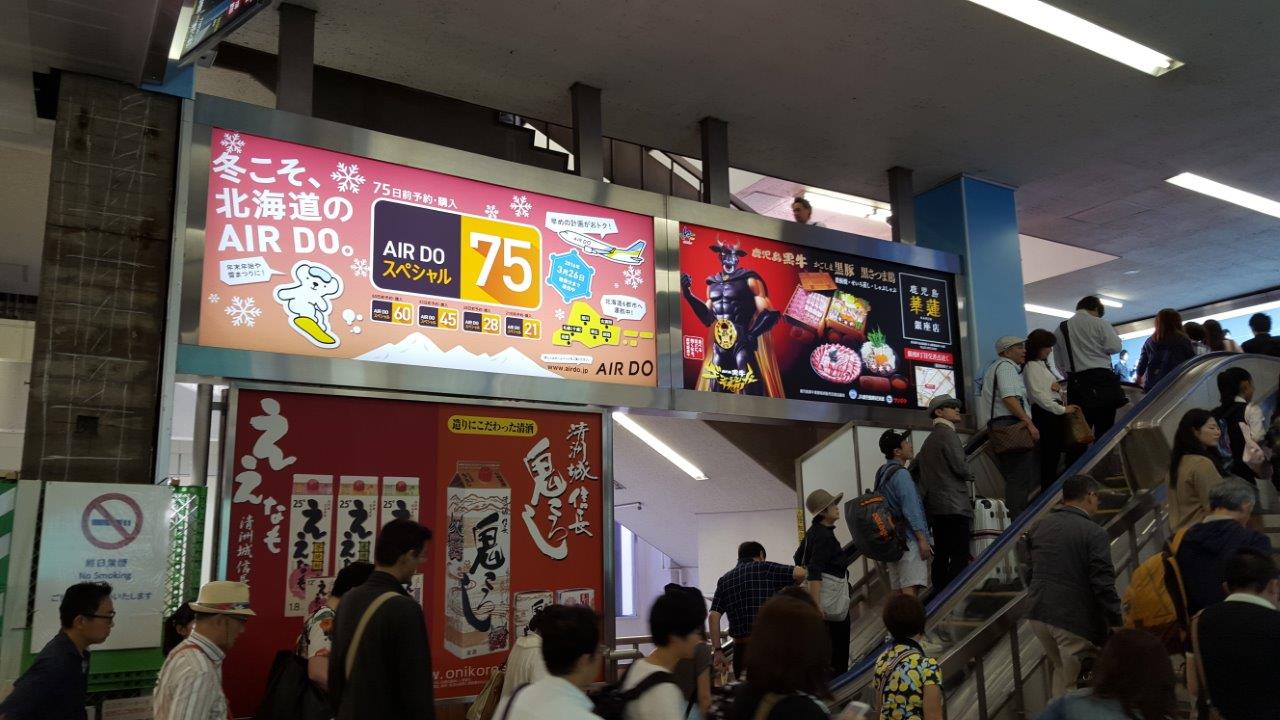
Imperial Palace and Imperial East Garden
The historic Tokyo Imperial Palace is located a short walk to the west from Tokyo Station. The Imperial Family of Japan reside within the palace. The inner grounds are only open to the public on New Year’s Greeting (2 January) and the Emperor’s Birthday (23 December) each year. Guided tours of the palace grounds are available year round but do not include entry into any of the buildings. You can apply for these tours through the Imperial Household Agency.
The Imperial Palace East Gardens are a great option to see a lovely Japanese style garden. The Gardens are open to the public however they are only open on specific days. To check if they are open on the day you plan to visit check the closing day calendar – just use Google Translate to translate the website into English. Typical opening hours are 9am to 4pm, with later closing times during summer.
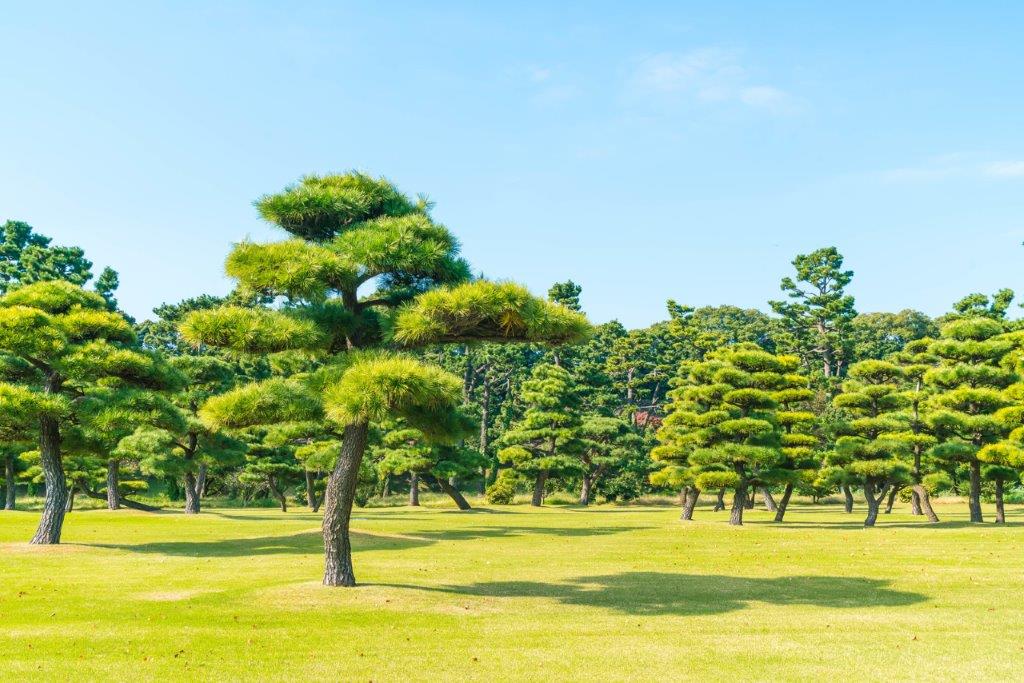
Ginza
If you are looking for upmarket shopping, entertainment and dining then Ginza the district to visit in Tokyo. Ginza is the place to visit for luxury clothing and cosmetic brands, boutiques, restaurants, night clubs, cafes, art galleries and department stores.
As a confirmed stationery lover one of the essential stops on our Tokyo visit was the Itoya stationery store in Ginza. The store is located in two side by side buildings, G. Itoya and K. Itoya, which between them provide twenty floors of absolutely amazing stationery concepts to enjoy.
We really enjoyed browsing through the immense range of paper choices which included both traditional and modern artwork, some great cards and stickers and many other stationery objects. Itoya has a huge range of ready-to-purchase items as well as the opportunity to work with the paper concierges to create your own paper creations such as customised notebooks, cards and letters.
Ginza is located within on the Tokyo east side in walking distance to the east of Tokyo Station and covers a large area. The main thoroughfare is Chuo Dori Street and is best visited on the weekends as the street is closed to vehicle traffic each afternoon.
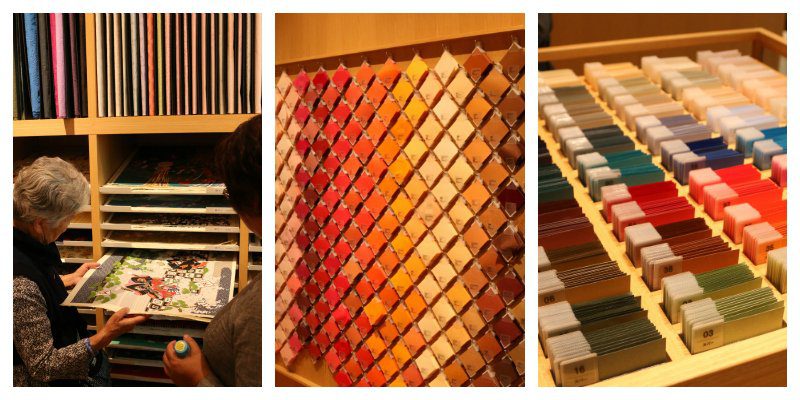
Kabuki Dinner Show
If you want to experience traditional Japanese theatre then a visit to see a Kabuki performance should be on your list of activities to do while in Tokyo. Kabuki has been listed as a UNESCO Intangible Cultural Heritage for Japan, along with their two other forms of theatre, noh (music, dance and drama) and bunraku (traditional puppet theatre).
Kabuki is an exaggerated form of theatre (performed only by men!), with amazing costumes and makeup, wigs and exaggerated moves by the actors and mechanical devices to create dramatic effect. You do not need to understand Japanese to enjoy the show.
In Ginza you can see a Kabuki performance at the Kabukiza Theatre, which stages plays almost every day. You may be interested to realise that you can purchase a ticket for only a single act rather than the whole play just to get a taste of the experience. The Kabukiza Theatre also offers English headsets to help you better understand what you are watching and also has western style seating.
Accommodation Options around Tokyo Station and Ginza in Japan
Check out the accommodation options around Tokyo Station and Ginza in the below accommodation deal finder from Booking.com.
Booking.comTsukiji Outer Markets
The Tsukiji Wholesale Fish and Seafood has recently closed and relocated to the new Toyosu site, which is close to Odaiba. The Tsukiji Outer Market is still mostly there and is still a great option to explore Japanese food culture.
There are still a great range of sushi restaurants in the outer market so make sure you check them out!
Elaine & David from The Whole World is a Playground
A great option to thoroughly explore the area is on a Tokyo Historical Cycling Tour through Ryogoku, Tsukiji, and Imperial Palace which you can book through Magical Trip, a small local tour operator.
Alternatively, you can book a Tsukiji Food Walking Tour through Magical Trip to explore the area with a local guide!
Click here to check out and book the Tsukiji Food Walking Tour through Magical Trip.
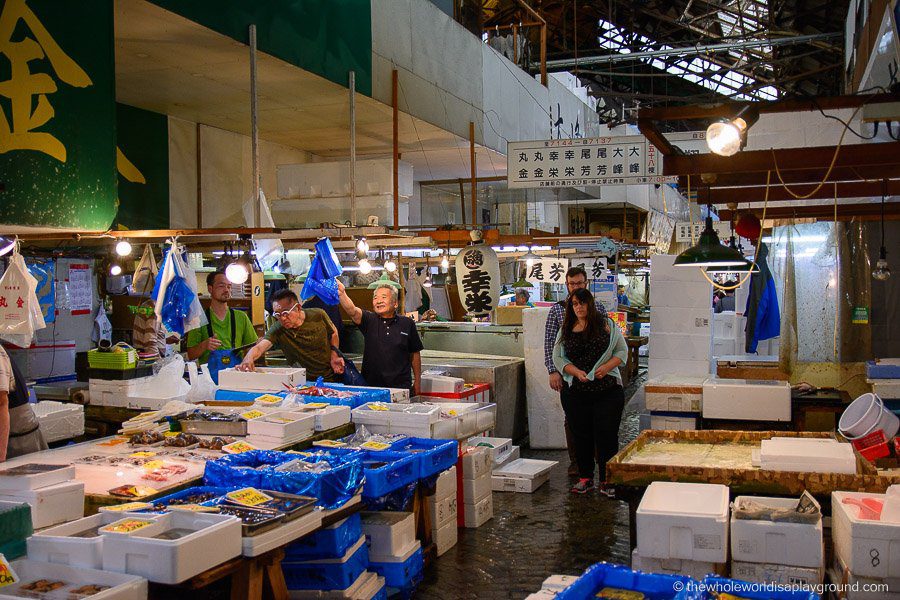
Explore Akihabara
I grew up watching anime and reading manga, so it made sense that visiting Akihabara was at the top of my Tokyo bucket list! Akihabara is one of the million neighbourhoods that make up the huge city of Tokyo, and it’s famous for being the heart of Otaku culture. Otaku is a Japanese term that means ‘fanboy/girl’ – there are manga/anime otaku, train otaku, doll otaku and so on.
In Akihabara you can buy pretty much anything hobby-related you can think of – from life-sized dolls to train sets, rare manga, vintage video games, you name it. There are also huge electronics malls and ‘maid cafes’, a weird Japanese institution that originated in Akihabara itself – basically, cafes with girls in maid uniform serving ‘cute’ food and drinks with songs and dances.
Wandering around Akihabara is fun – you can check out manga and anime stores, drop a few yen into a video game at one of many game arcades or even try your luck with the claw machine. However, to really get an insight into otaku culture we really recommend an Akihabara tour – we loved it!
Margherita Ragg – The Crowded Planet
Magical Trip offers the Anime and Gaming Adventure Tour in Akihabara to enable you to have a 3 hour guided experience through the Akihabara area, which includes checking out both classic and the latest gaming, a visit to a maid cafe for a uniquely Japanese experience! Click here to check out and book your Anime and Gaming Adventure Tour in Akihabara with Magical Trip.
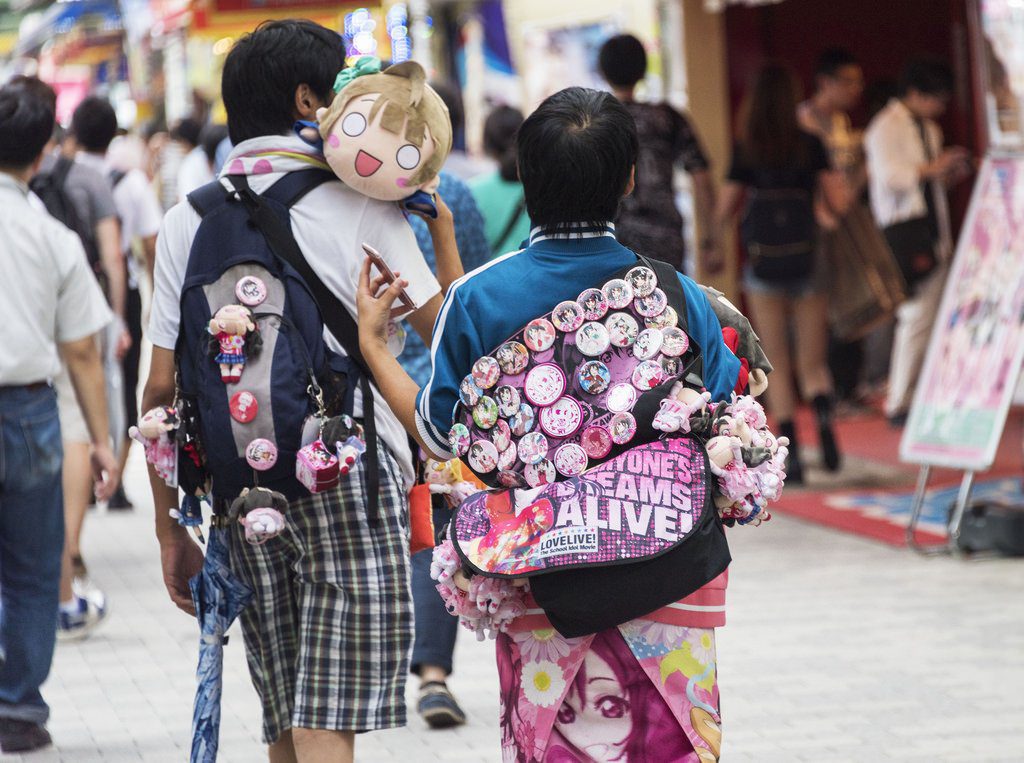
Maricar in Akihabara
MariCar is a crazy and exhilarating activity to do in Tokyo. Fans of Nintendo might notice the similarity in the name to Mario Kart, and the similarities don’t end there. Adults don large onesies of their favourite characters, and drive through the streets of Tokyo in customised go-karts. That’s right, you drive on the road, with the rest of the traffic! It’s incredibly fun and, at times, terrifying to be hitting speeds of up to 60km/hr in a tiny go-kart. Especially when buses and trucks drive past you!
Drivers are separated into small groups (for safety) and have a leader to guide them through the course. Rest assured, no banana peels or turtle shells are fired into other drivers! Driving through Tokyo’s popular areas is a pretty unique and fun way to see Tokyo, and we had a nice rest stop at the halfway point.
This activity is not for children, and the operators are very strict when it comes to checking International Licences (that’s right, you can’t do this if you don’t have a valid International Licence issued in your home country). It costs JPY 8,000 to do the 2-hour course, or JPY 10,000 to do the 3-hour course; money well spent for adventure-seeking rev-heads!
Ling & Guy Richardson from Travel-ling
Click here to check out our detailed article on how to book your Mario Kart Go Karting Experience
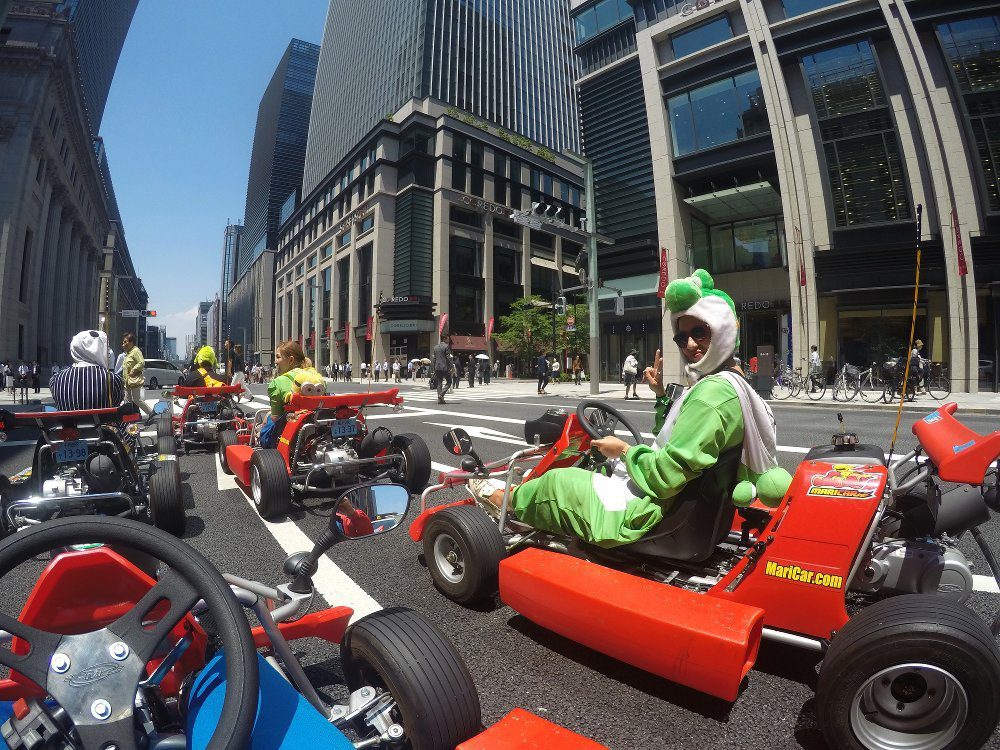
Accommodation Options around Akihabara in Tokyo
Check out the accommodation options around Akihabara in the below accommodation deal finder from Booking.com.
Booking.comHama-rikyu Gardens
Hama-rikyu Gardens is the family garden of the Tokugawa Shogun which served as an outer fort for Edo Castle and retains a tidal pond of seawater. Black pine trees appear to do well here, against a backdrop of high-rise buildings, and they are regarded as a symbol of eternity.
Paul Johnson from A Luxury Travel Blog
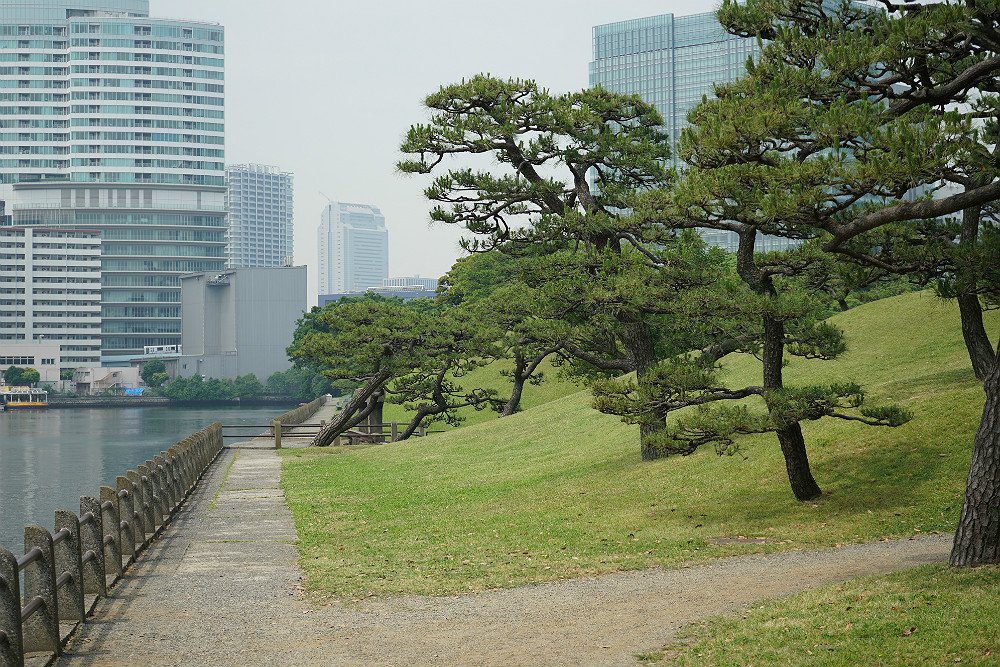
Ninja Akasaka Restaurant
I went to the Ninja Akasaka restaurant thinking it would be a fun experience with ninja decoration and tricks played by the staff and expected nothing of the food. But it was one of the best meals I had in Tokyo, and I ate at two Michelin starred restaurants and some of the most famous places in the city. Come with an open mind and be entertained by the surprising food, the smiling staff and the dungeon look & feel of the place
Mar Pages from Once in a Lifetime Journey
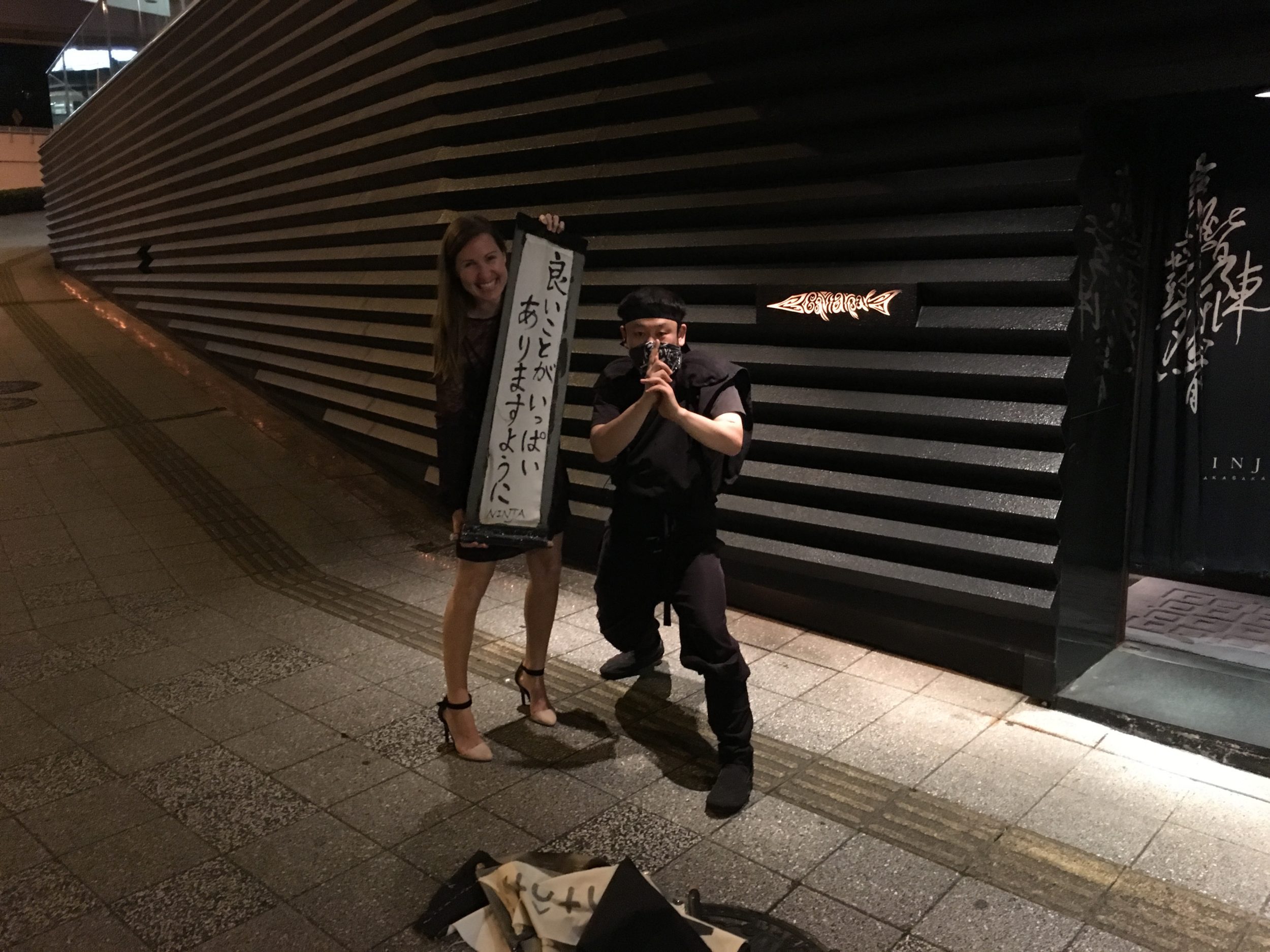
What to Do in Northern Tokyo – Sumida
On the map below you can click on each marker to see interactively the location of each of the North Tokyo – Sumida attractions which are detailed below.
Sumo Wrestling Tournament
We were very fortunate that a sumo wrestling tournament was being held in Tokyo at the time we planned to visit – in fact once I realised that our schedule aligned I built our entire Japan itinerary around enabling us to attend!
The tournament was held in Ryogoku Kokugikan which is located in Sumida on the east side of Tokyo and we had an amazing day out. The sumo tournament runs for the full day and into the evening, starting from the juniors and working up to the professional level in the final session which finishes around 6pm, however you do not need to attend for the full event. We arrived around 2pm and found the arena to only have a small number of spectators, which progressively grew to a full house for the professional level matches.
Sumo wrestling is an event where you have a measured pace and tradition, interspersed by the intensity of the matches themselves. Some finished quickly and others took longer, with some having amazing throws to win the match! The spectators also really got into it with a great atmosphere within the arena.
Sumo Wrestling Tournaments are typically held in Tokyo in January, May and September each year so if your trip lines up I would definitely recommend that you plan to attend. For more information check out my article on How to Buy Sumo Wrestling Online Tickets.
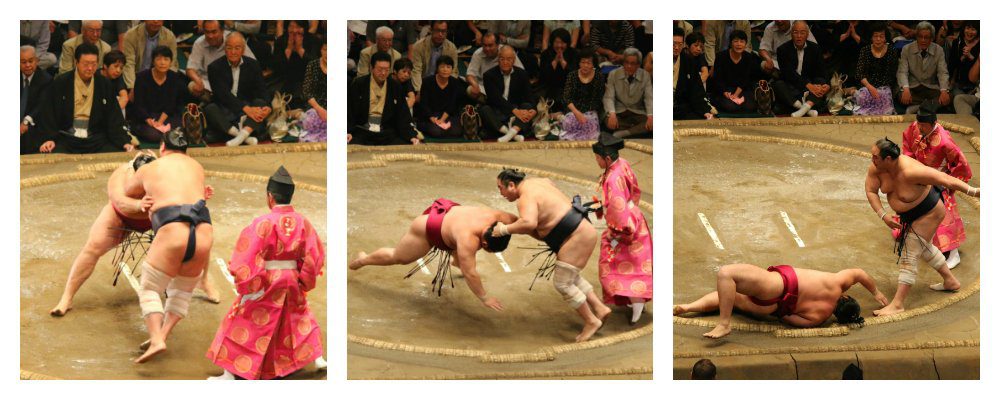
Sumo Stable Visit
Early in the morning, under the slightly warming sun in Tokyo, you can make your way to a proper beya, a Japanese Sumo stable to watch an asageiko, the morning training session. Ryogoku is home to many sumo stables, to the famous sumo tournament hall and thus is known as the sumo quarter. Watch out for sumo wrestlers cycling around or doing their grocery shopping.
If you feel like watching the actual action taking place, you can visit the Arashio Beya, a sumo stable, who invite visitors to watch the morning session through the large glass front window area. A large group of young and older sumo wrestlers practice here every day from 7:30 to 10am, except in March, July, November and one week after each grand tournament. The best part about it: They don’t mind having some tourists in front of the window taking photos. It’s a dedicated sumo practice full of power and energy that lets you delve into a large part of the Japanese culture.
For a proper visit at a stable, you need to take some precautions: call in advance, bring a Japanese friend and some gifts and stay seated for the entire practice. Advice: Come to Arashio Beya first and then decide if you feel like entering the sumo stable.
Clemens Sehi from Traveller’s Archive
Edo Tokyo Museum
The Edo Tokyo Museum in the Ryogoku area of Tokyo is perhaps as striking from the inside as it is from the outside. Architect Kiyonori Kikutake based his design on the old ‘kurazukuri’ style storehouses of Japan and the building gives you a taste of the fine balance between old and new you’ll find in its exhibits.
You’re welcomed into the museum’s permanent exhibition by a full-sized replica of the Nihonbashi Bridge that linked two sides of the Nihonbashi River in Tokyo since the 17th century. As you make your journey over the bridge and through time, you learn about the townspeople of Edo (the former name of Tokyo) and the transformation of their city from Samurai-rules castle town through commerce with other villages and islands, the industrial revolution, destroying earthquakes and wars to the modern Tokyo we know today.
This museum is suited for all ages, as many of the displays are interactive and there is lots to see and do. My favourite part of the permanent exhibition were the many miniatures showing tiny versions of buildings, people and even complete parts of the city. You can easily spend half a day here to look at all the incredible details and discover something new every time!
Nienke Krook from The Travel Tester
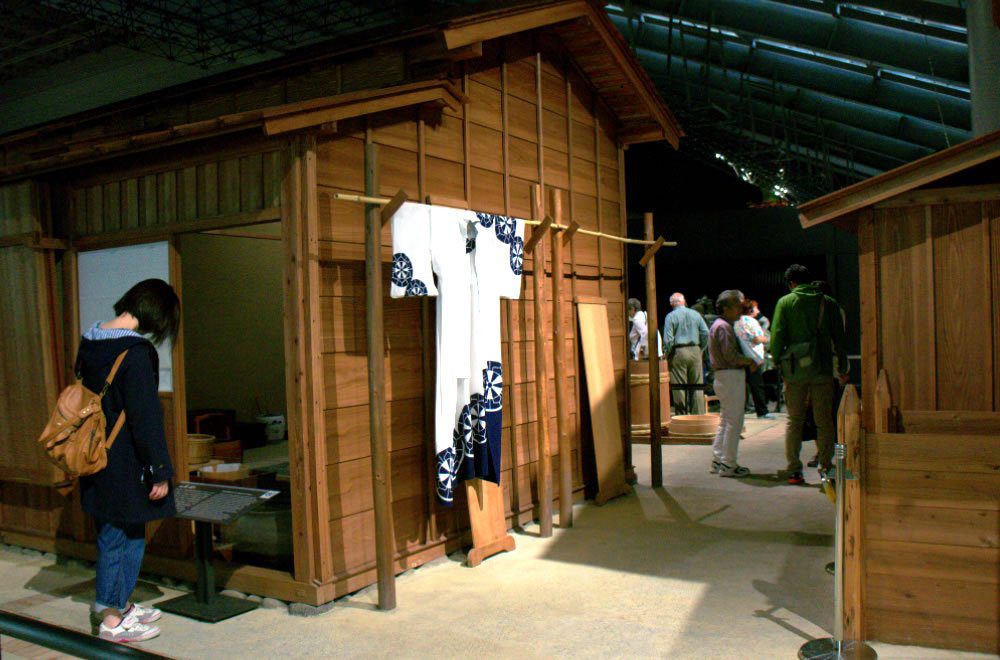
Accommodation Options around Sumida in Tokyo
Check out the accommodation options around Sumida in the below accommodation deal finder from Booking.com.
Booking.comTokyo Skytree
Tokyo is perhaps one of the largest cities tourists can visit, and the only way to fully appreciate the scale of Japan’s capital is to see it from above. The Tokyo Skytree is a worth-while attraction that is sometimes overlooked by visitors due to its location in the north-eastern suburbs, a 45-minute train ride from Shinjuku or Shibuya.
A great activity for children and adults alike, the Tokyo Skytree is certainly worth your time and is much more than just an 360° observation deck over the city – there are many shops and restaurants at the top, you could easily spend a whole day there! If you’re fortunate enough to visit on a clear day, Mount Fuji can even be seen in the distance. The view is sure to leave you speechless.
In 2017 the Skytree will be celebrating its 5th birthday so there’s never been a better time to visit. Tokyo Skytree is located a few moments walk from Oshiage Station on the Hanzomon line. Be sure to include this underrated attraction on your Tokyo itinerary!
Alyse from The Invisible Tourist
At a height of 634 meters the Tokyo Skytree is the tallest structure in Japan. The Tokyo Skytree has two observation decks, the lower Tembo Deck at 350 meters and the upper Tembo Gallery at 450 meters.
Click here to check out prices and to book your Tokyo Skytree visit through the Klook website
Noting the massive queues that usually form at the Tokyo Skytree, there is a special queue for overseas visitors where you can purchase either a single ticket to the Tembo Deck or a Combo Ticket to access both the Tembo Deck and the Tembo Gallery. Note that you pay a high premium to go through the international visitor queue, but this ticket also enables you to skip the lines and not have to reserve a particular timeslot which trust me is a big benefit…
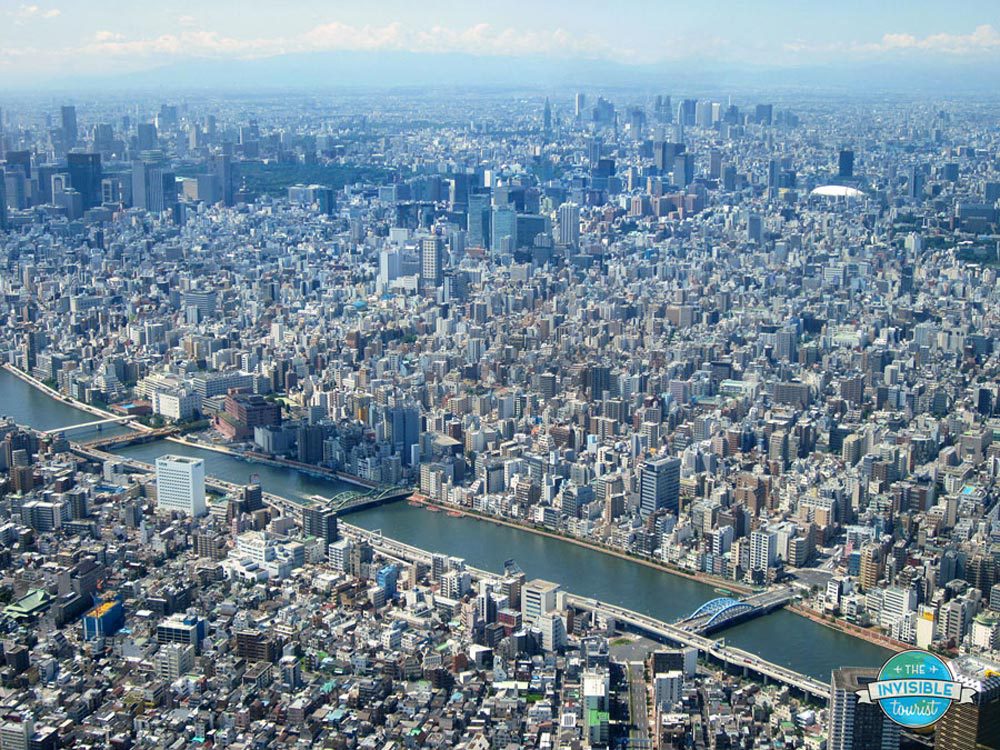
Accommodation Options around Tokyo Skytree in Japan
Check out the accommodation options around Tokyo Skytree in the below accommodation deal finder from Booking.com.
Booking.comWhat to Do in Northern Tokyo – Taito and Bunkyo
On the map below you can click on each marker to see interactively the location of each of the North Tokyo Japan attractions which are detailed below.
Asakusa
Wanna have an authentic experience in Tokyo? Then you should head down to Asakusa area because it’s definitely one of the most local spots in Tokyo. Sensoji, the historical temple is an absolute highlight you must visit! Later on, you can walk around the park, visit a local market and look out for golden dragon dance. When you get hungry, you should go for very traditional Asakusa soba noodles and finish with some “local deserts” like a melon pan or Asakusa sweets.
To finish your trip to Asakusa in big style, I would recommend visiting Sky Tower which is just across the bridge. If you are on a budget, you can just visit shopping center right next to the tower which offers stunning views of the city as well. On top, you will also find sunny terrace where you can relax, grab a coffee and wait for sunset.
Viktor Vincej from Traveling Lifestyle
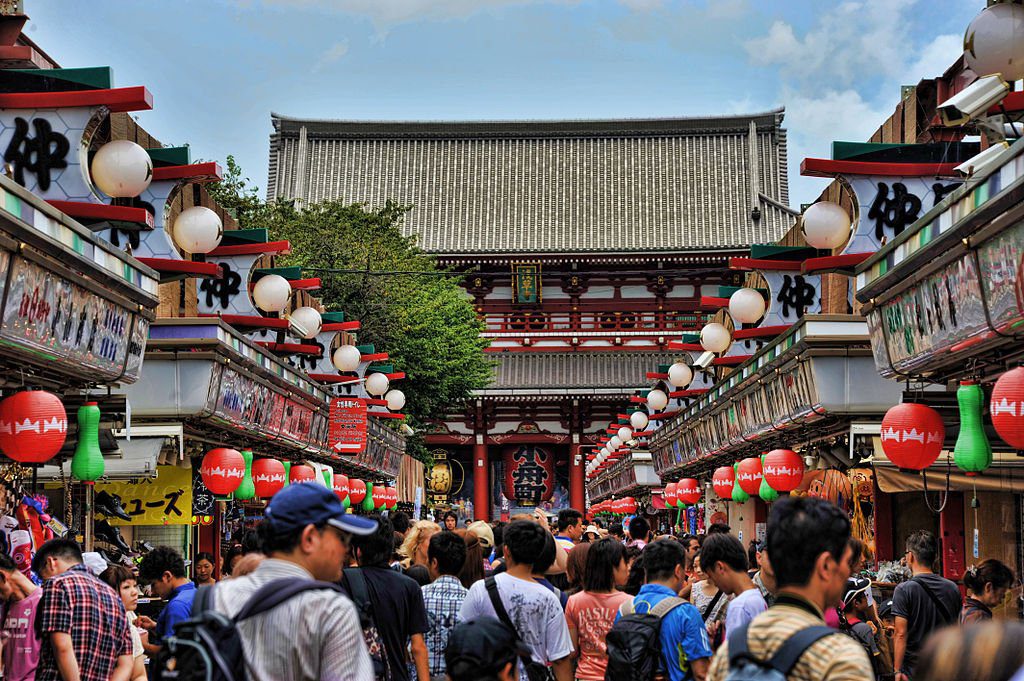
Senso-ji Temple
Tokyo is such a massive city and it would be almost impossible to see it all in one visit. We only had a few days in Tokyo so had to carefully choose which parts we really wanted to see. Alannah had been reading while we were there and the little girl in the book visited Senso-Ji Temple and Alannah was adamant that she wanted to visit there.
Senso-Ji Temple, Tokyo’s oldest and busiest temple, is located in Asakusa, a very touristy part of town. I am so thankful that Alannah insisted as this turned out to be my favourite place in Tokyo. The entry into Senso-Ji Temple is lined with souvenir shops where you can purchase little trinkets that Japan is famous for. We arrived right on dusk and a number of the shops were closing for the day which meant I had a quick power shop!
There are many restaurants around Asakusa and not far from Senso-Ji we had the best meal that we ate on our whole visit. A random place we found when we were walking around. You can take in the views from the conservatory at the Tokyo Skytree and marvel at the size of metropolitan Tokyo.
Sally Lucas from Our 3 Kids v The World
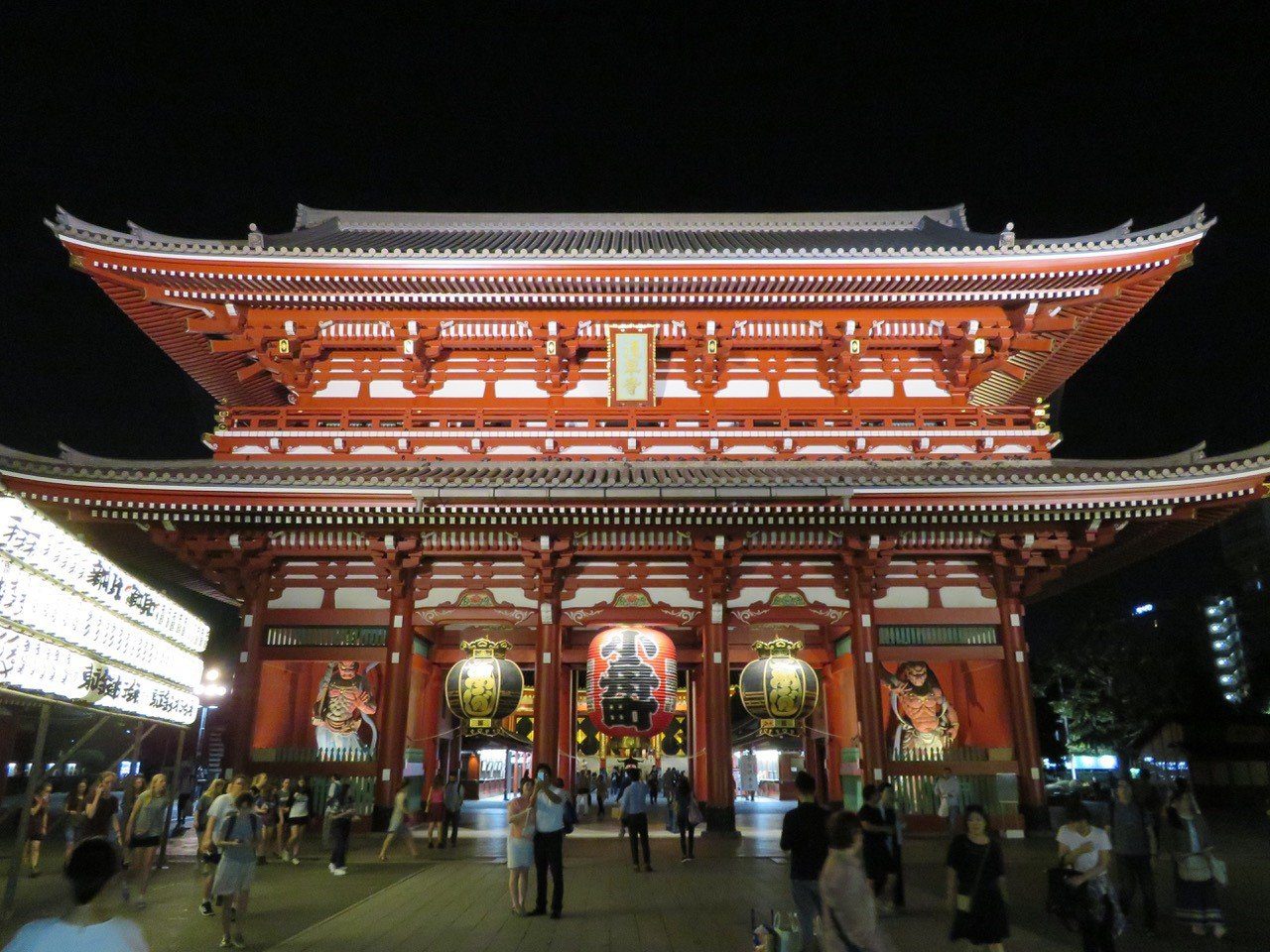
Hanayashiki Amusement Park
Hanayashiki is the oldest amusement park in Japan, opening in 1853. Hanayashiki is located in the Asakusa district. Asakusa is home to the Sensoji Buddhist shrine and Nakamise Shopping Street. This area of Tokyo is well worth visiting. Low traditional wooden buildings line the market street which has been leading visitors to the shrine for centuries. The area is known for being a place to step back in time to a Tokyo of the past. After a morning of sightseeing, shopping and eating in Asakusa, families should head to Hanayashiki for a few hours of pure fun.
Hanayashiki was designed to maximise its tiny site in downtown Tokyo. The rides fit together here like a jigsaw puzzle. You’ll find rides for all ages but the preschool age groups are best catered for. Visitors pay an entrance fee and then buy tickets to exchange for rides. Or you can purchase a ‘Free Ride Pass’ for unlimited rides. One adult can ride for free when accompanying a child under 4 years old. The Space Shot was the highlight for us. Launching riders up to a brief, yet spectacular, view out over Asakusa and to the Tokyo Skytree.
Kaylie Lewell from Happiness Travels Here
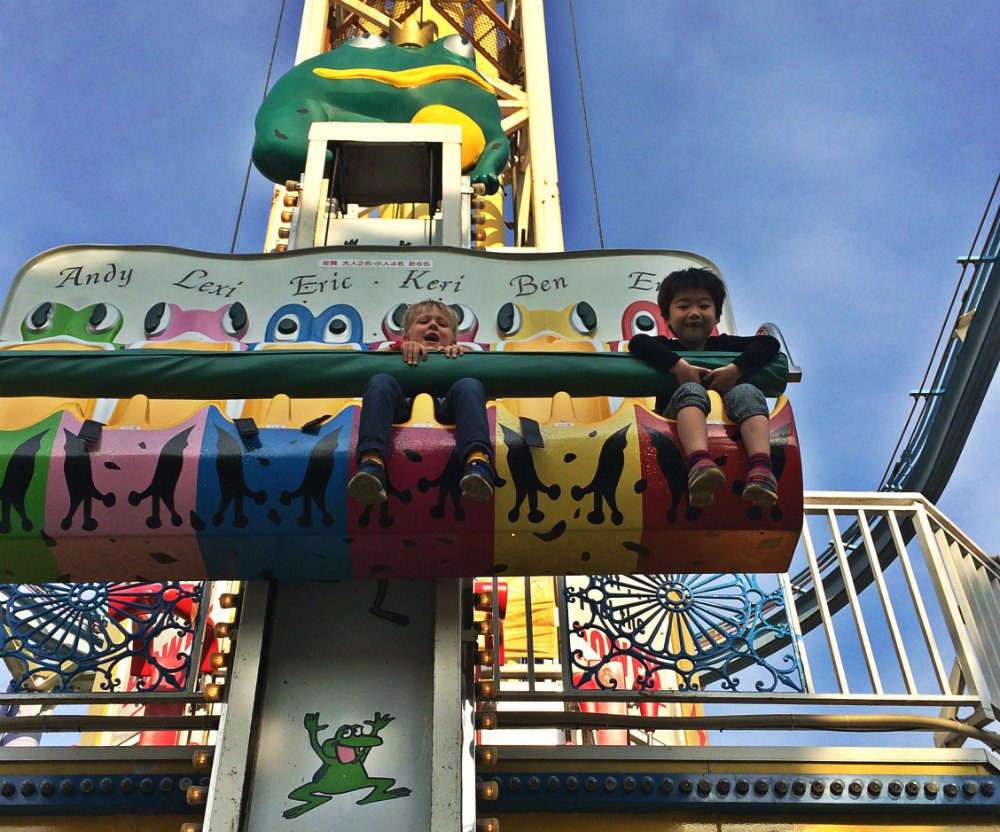
Shopping in Kappabashi near Ueno and Asakusa
For those who love both cooking and shopping, a visit to Tokyo’s Kappabashi Dori is a must. Located between Ueno and Asakusa – just 10 minutes’ walk West of Senso-ji (temple) – this stretch of road is lined with dozens of shops selling everything a restaurant could need, except for the food!
Alongside a huge array of stoves, rice cookers, grills, pots, pans and cooking utensils you’ll find plenty of covetable tableware, including beautiful pottery, lacquerware and bamboo items, and a great choice of chop sticks and chop stick rests, as well as decorative items such as lanterns, noren (the fabric dividers hung in doorways throughout Japan) and table linen.
Some shops specialise in sampuru, the surprisingly realistic plastic models of food that many restaurants display in the window to showcase their menu, but be warned, these are expensive! You can shop for practical items such as high quality Japanese knives, or more quirky objects such as unusually shaped cookie cutters or wagashi (sweet) moulds. Coffee fanatics are catered for too by a large corner store stocking everything from large and very expensive barista machines to individual roasters, grinders and pour over devices – the indie coffee scene is huge in Tokyo.
At less than a kilometre long, you’ll be surprised at how much time (and money) some of us can while away browsing Tokyo’s Kitchen Town!
Kavita Favelle from Kavey Eats
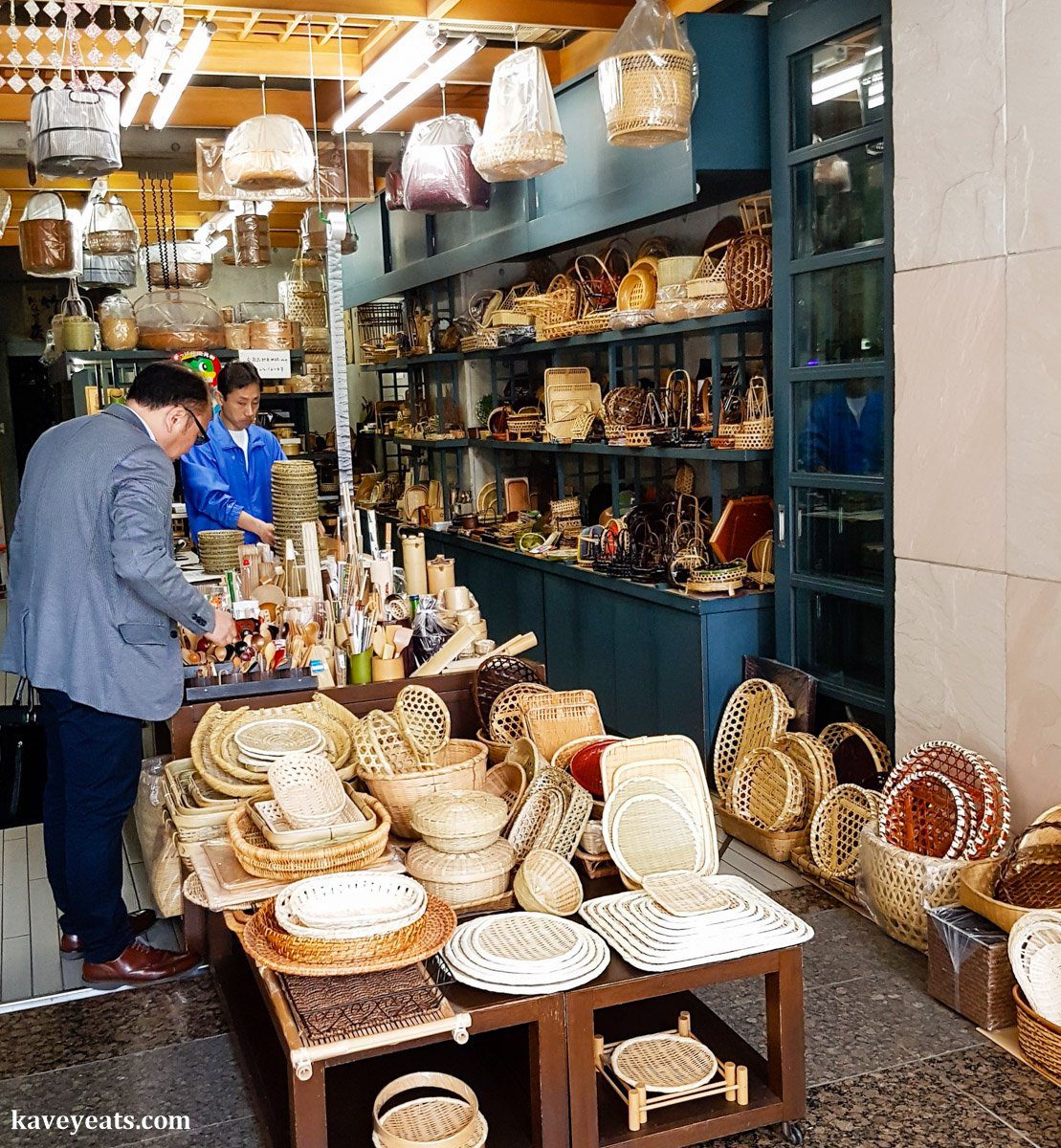
Accommodation Options around Asakusa in Tokyo
Check out the accommodation options around Asakusa in the below accommodation deal finder from Booking.com.
Booking.comUeno Park
Ueno Park is a spacious public park in central Tokyo and is one of the best activities for tourists in Tokyo. Our first of many visits, was with a volunteer guide in Tokyo, who could explain everything to us. It is popular with visitors due to its access the very large Ueno train station, and because the park is a lot more than just a park. Ueno Park was originally part of Kaneiji Temple, which was once one the most elaborate and wealthiest temple areas in Tokyo. Today there are four shrines throughout Ueno Park, including the Toshogu Shrine pictured here.
Ueno Park has a huge boulevard where there are over 1,000 cherry blossom trees, and locals flock here during the cherry blossom season, and throughout the rest of the year because Ueno Park is a lovely place to relax. The huge Shinobazu Pond dominates the southern end of Ueno Park and provides a peaceful sanctuary for people to walk around or sit and watch. Ueno Park also has the very popular Ueno Zoo and is home to many museums like the Tokyo National Museum, the Tokyo Metropolitan Art Museum and the National Museum of Science and Nature.
Paula McInerney of Contented Traveller
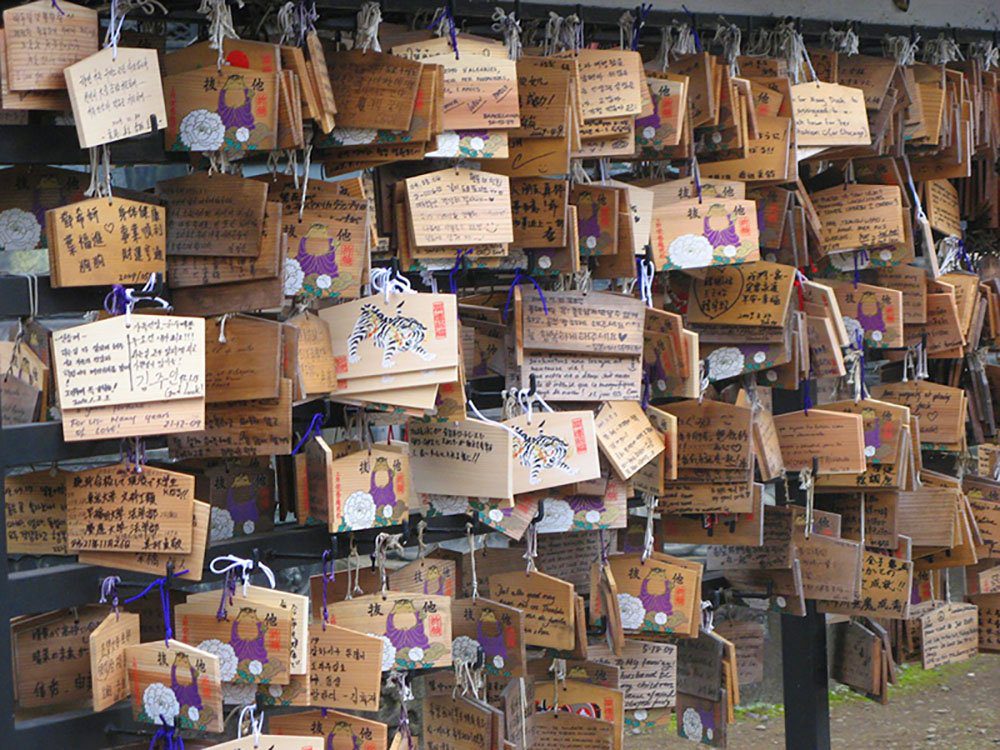
Accommodation Options around Ueno in Tokyo
Check out the accommodation options around Ueno in the below accommodation deal finder from Booking.com.
Booking.comJapanese Baseball in the Tokyo Dome
For our trip to Japan we also decided to see a Japanese Baseball match in the Tokyo Dome – and that was a great decision! We booked tickets to see the Yomiuri Giants (one of the major Tokyo teams) versus the Hanshin Tigers. The arena had a full house of spectators and the vibe was amazing! And it was a great opportunity to see a different side of Japanese culture.
The Japanese baseball season typically runs almost daily from late March to October, with other matches occurring at other times. For more information on how to book your tickets check out our article on How to Buy Tokyo Baseball Online Tickets.
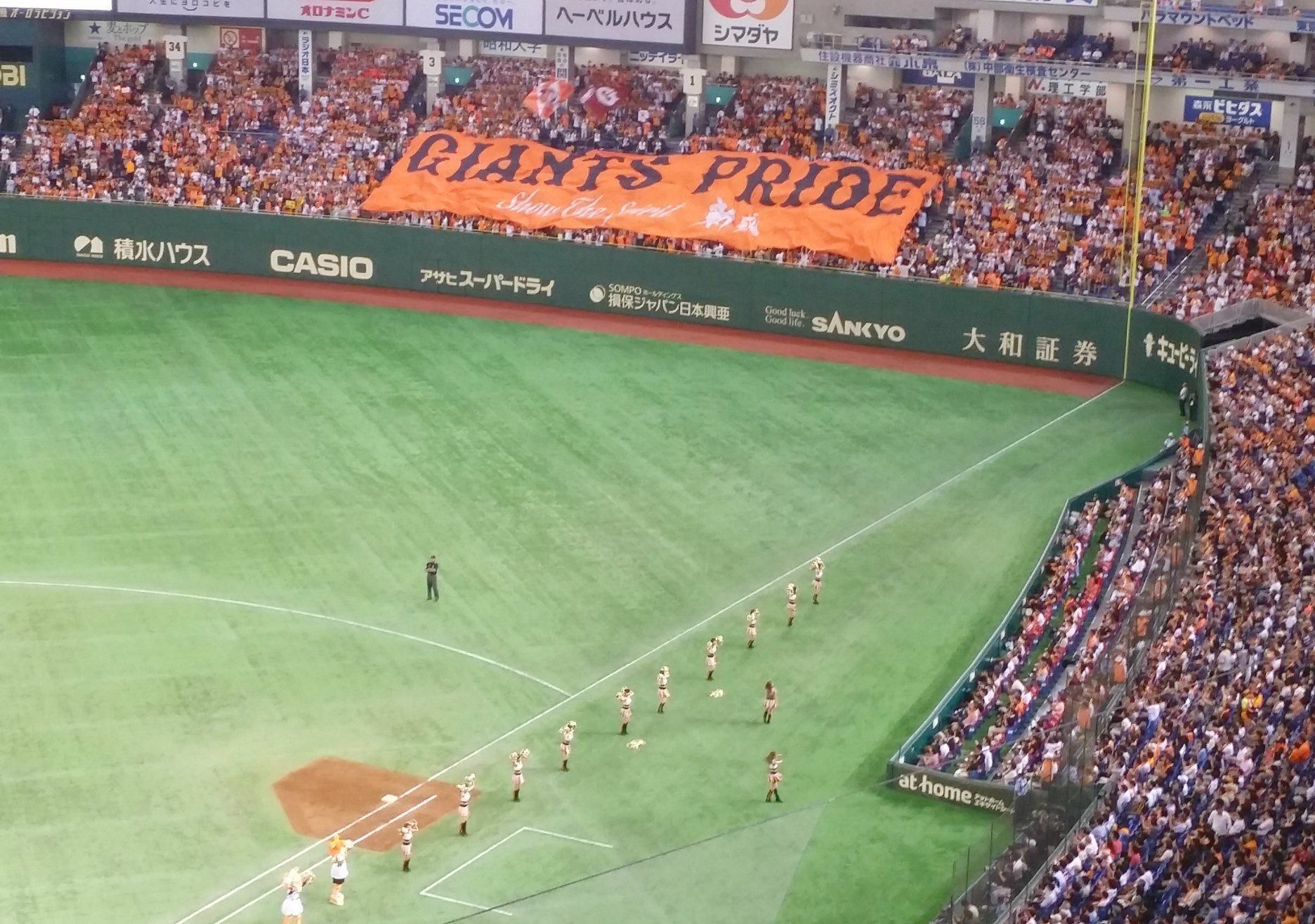
Ikebukuru Free Guide Service
A great option to check out in Ikebukuru is the free guide service offered in the local area by the Toshima City Volunteer Guides for International Tourists. They offer weekend tours alternating between Saturdays and Sundays. Tours run from 1 pm for 1 – 1 1/2 hours over five different courses. No bookings are required, however tours are offered on a first in first served basis. For more information check out their website at this link.
Accommodation Options around the Tokyo Dome in Japan
Check out the accommodation options around the Tokyo Dome in the below accommodation deal finder from Booking.com.
Booking.comWhat to Do in Western Tokyo – Shinjuku
On the map below you can click on each marker to see interactively the location of each of the options to visit Western Tokyo top attractions which are detailed below.
Tokyo Metropolitan Building
The Tokyo Metropolitan Government Building is a perfect way to see the Tokyo skyline without having to shell out any money. Located in Shinjuku, these buildings are the central administrative seat of power in Tokyo and was the tallest building in Tokyo until 2007.
Take an elevator from Building 1 to one of the 202m high tower observatories. You get almost 360 degree views of Tokyo with informative descriptions of what you are seeing. Our kids really enjoyed seeing Tokyo from above and noticing all the landmarks that we had already visited like the Sky Tower, Meiji Shrine and Yoyogi-koen Park.
On a really clear day, you might be able to catch site of Mount Fuji to the west. The observatories are open 9:30am-11pm, so you can visit during the day and evening for a completely different experience. Best of all, this is a completely free activity.
Dawn Nicholson from 5 Lost Together
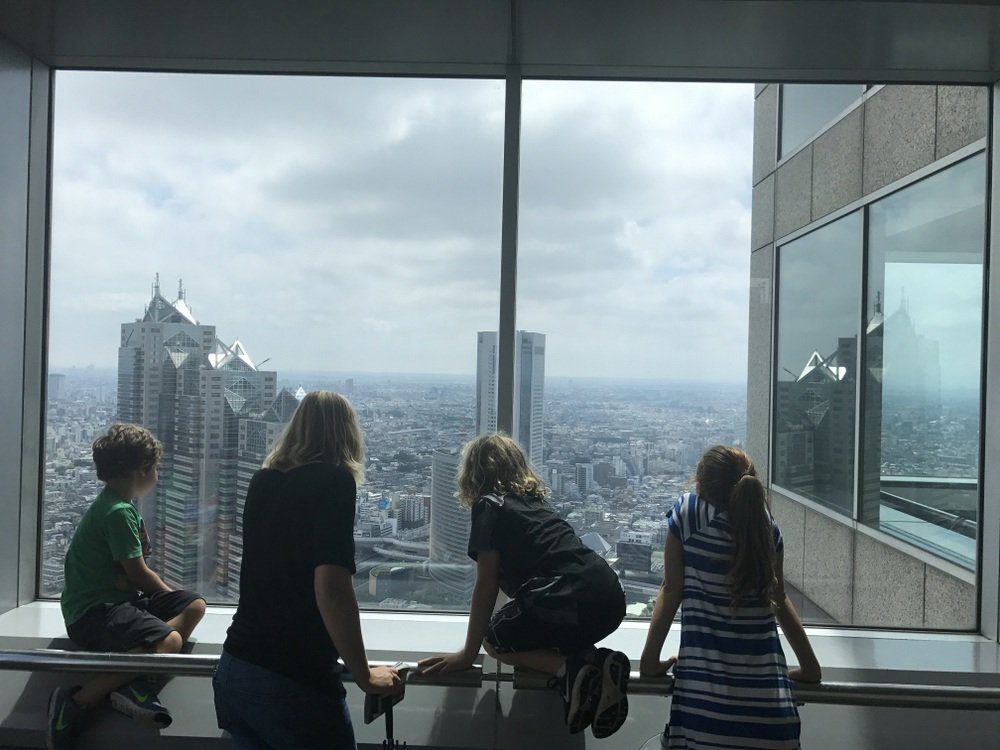
Shinjuku Gyoen Garden
Shinjuku Gyoen Garden is a fantastic urban oasis in the heart of the Shinjuku area of Tokyo. The gardens are immaculately maintained, and ideal for visiting families with wide open spaces for kids to run around and play which is a rarity in busy Tokyo!
There are three styles of gardens on display – traditional Japanese landscape gardens featuring the beautiful Kyu Goryotei also known as the Taiwan Pavilion, a formal French garden and English landscape garden with wide spacious lawns dotted with cherry trees.
The azalea grove was also a highlight for us, our kids loved running around and playing hide and seek amongst the stunning almost fluorescent pink blooms.
While beautiful all times of the year, Shinjuku Gyoen is a must to visit in spring when hundreds of sakura (cherry blossom) trees of over 12 different varieties are flowering. You will see groups of Japanese families, friends and colleagues all taking part in hanami, the tradition of celebrating spring under the cherry blossom trees with picnics and songs.
Kylie Gibbon from Our Overseas Adventures
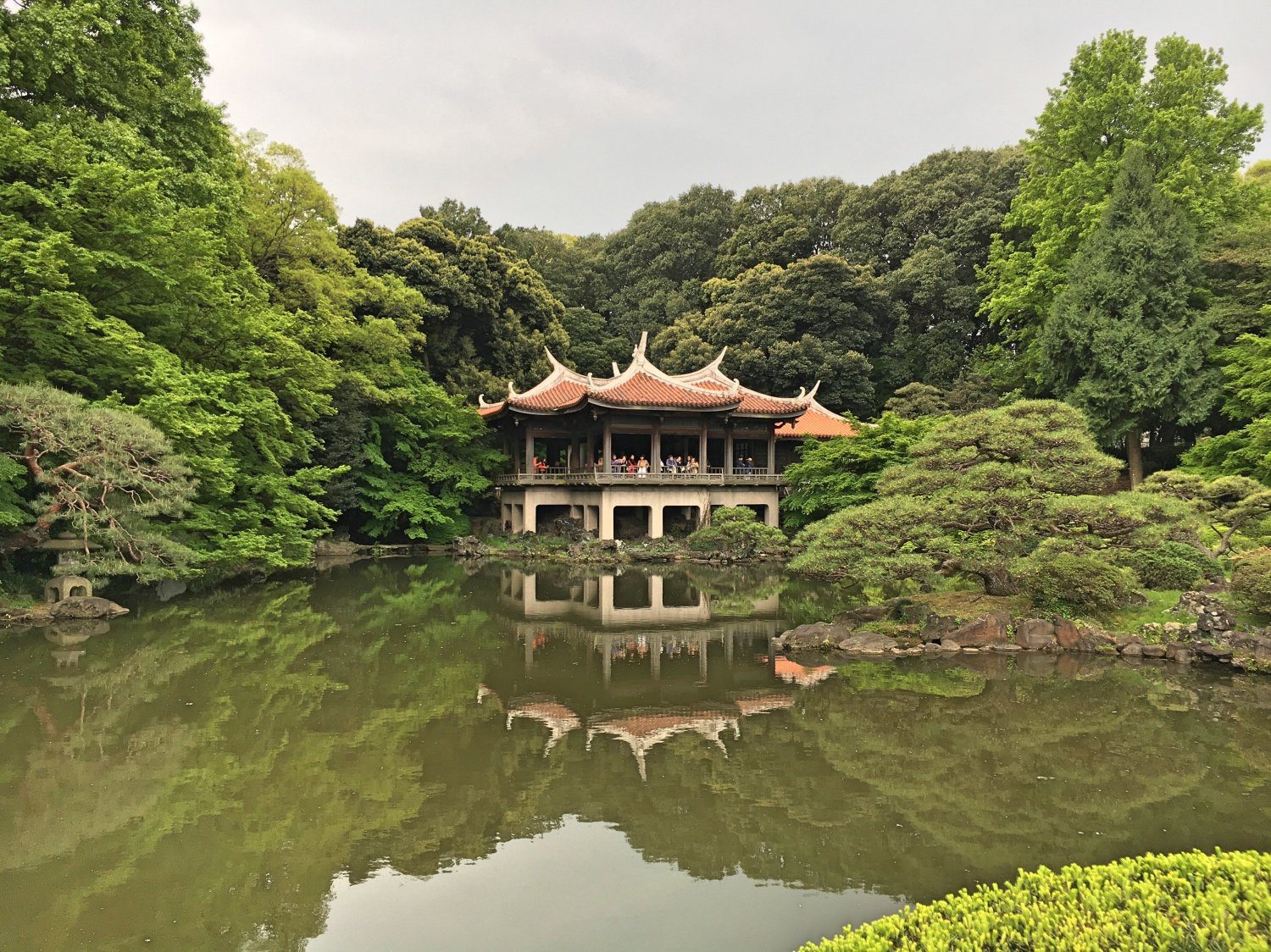
Samurai Museum
The Samurai are a Japanese icon, highly revered both locally and internationally. When visiting Japan, a trip to the Tokyo Samurai Museum in Shinjuku’s Kabukicho area provides an in depth look into their lives and history. Better yet, it’s totally appropriate to bring the whole family around.
This small, modest museum boasts an amazing collection of Samurai armour, swords and other artifacts which took founder Tetsuro Koyano over five years to curate. Led through the museum by your guide you will be immersed in the rich world of the samurai before watching a Samurai Sword Battle performance. You may even be selected from the crowd to participate!
Leah Smileski from Kid Bucket List
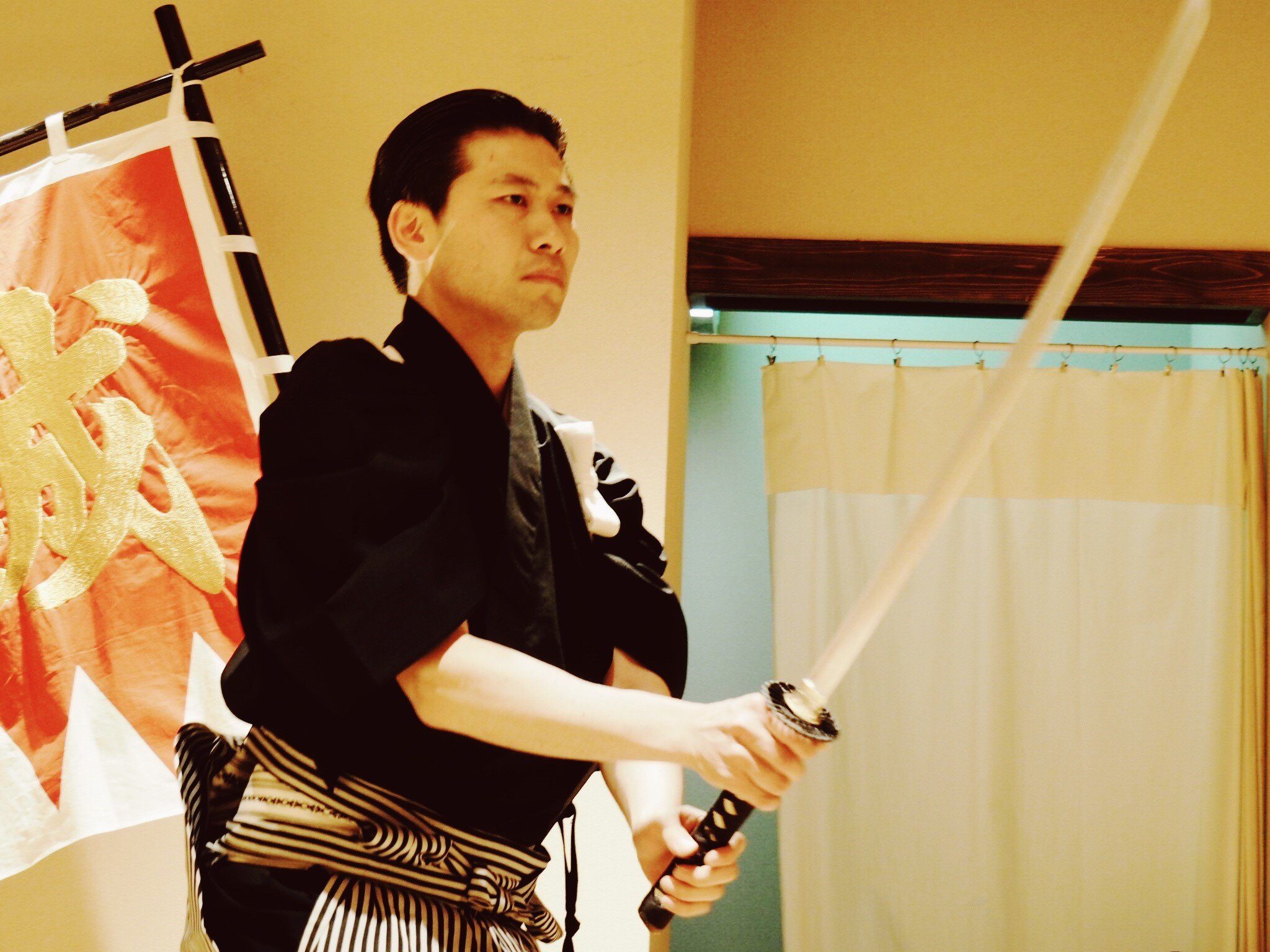
Accommodation Options around Shinjuku in Tokyo
Check out the accommodation options around Shinjuku in the below accommodation deal finder from Booking.com.
Booking.comWhat to Do in Western Tokyo – Harajuku
On the map below you can click on each marker to see interactively the location of each of the Western Tokyo – Harajuku attractions which are detailed below.
Harajuku
The area around Harajuku Station is well known for a selling a vast range of teenage culture. The centre of the shopping area is to the north side of Harajuku Station in Takeshita Street, which is surrounded by a fashion stores ranging from boutique, trendy and second hand.
Ometesando Avenue is just south of Takeshita Dori is for the older shopper and showcases major brand name shops.
Meiji Jingo Shrine
We love Tokyo but it moves at such a frantic pace that it nice to have a few spots to slow down, feel the serenity, and absorb the culture and history around you. Meiji Jingu Shrine is located in Shibuya, an otherwise busy inner city area but the shrine itself is a real oasis that every visitor should make time to experience.
Tokyo has some of the most expensive real estate per square foot in the world so it’s even more impressive that over 170 acres has been set aside here for the shrine in memory of the late Emperor Meiji. Walking down its wide approach you’ll feel dwarfed beneath the enormous torii gates and the forest of 120,000 trees planted as part of its master planned design.
Many festivities are held here throughout the year that are open for everyone to attend or just stop by on a quiet day and enjoy the change of pace. If you come on a weekend you might even spot a colourful and elaborate Shinto wedding in progress.
Toni Broome from 2 Aussie Travellers
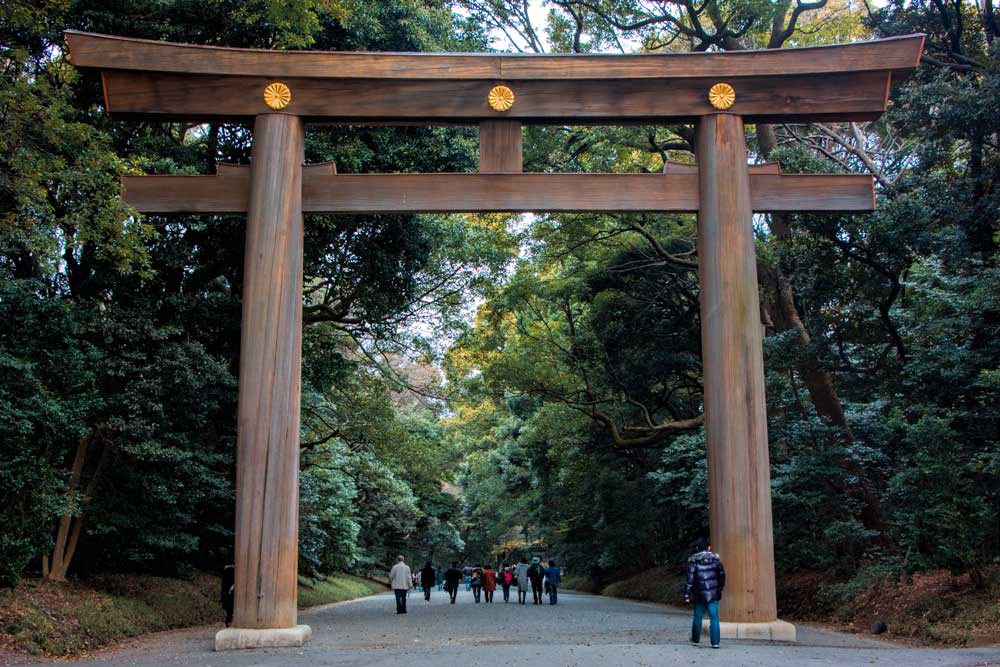
Yoyogi Park
Yoyogi Park is located to the west of Harajuku Station. Plan to visit on a Sunday to see the local teens dressing up in amazing fashions and cosplay costumes!

Rabbit Cafe
Tokyo has no shortage of fun and quirky activities but the one I highly recommend is a visit to a rabbit cafe. Why stop at a regular old cafe when you can get your caffeine fix in the company of adorable furry bunnies?
There are a number of rabbit (as well as other animal) cafes scattered around Tokyo where for a small fee you can cuddle, play with and feed real live bunnies. The bunnies all have different temperaments and sizes so consider yourself warned that you will want to meet as many of them as possible. Since bunny safety is a priority, hand sanitizer and a blanket for your lap will be provided.
You can even bring the entire family along as long as your kids are old enough to behave appropriately around the bunnies. The entire experience is delightful and rather relaxing after a hectic day of sightseeing- as long as you don’t mind a little bunny fur on your clothing.
Matilda from The Travel Sisters
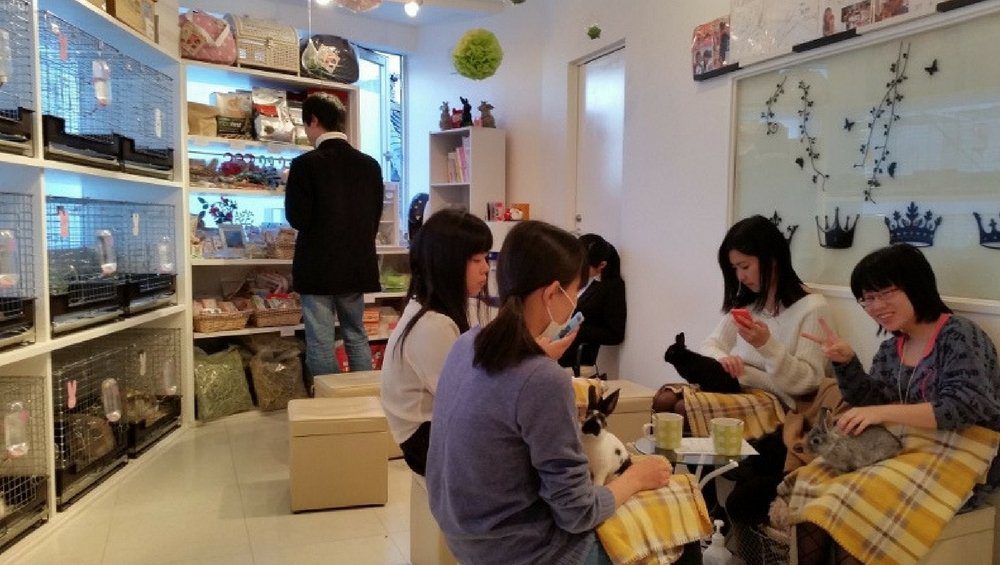
Accommodation Options around Harajuku in Tokyo
Check out the accommodation options around Harajuku in the below accommodation deal finder from Booking.com.
Booking.comWhat to Do in Western Tokyo – Shibuya
On the map below you can click on each marker to see interactively the location of each of the Western Tokyo – Shibuya attractions which are detailed below.
Shibuya Crossing
My wife certainly thought I was crazy when Shibuya Crossing made my short list of things we had to see in Tokyo. While it may seem like just a street intersection, it is known as the world’s busiest pedestrian crossing! It is estimated that up to 2,500 people cross the intersection every time the light changes.
We recommend experiencing it 2 ways. First physically cross the street yourself and be amongst the crowds rushing across. Second, go the to Starbucks on the corner, order a coffee and head up to their second floor. They have nice bar seats along tall windows which offer a bird’s eye view of the crossing. You get to see all the action as the crowds build and lessen in sync with the signals.
There is no cost to the experience other than your cup of coffee entrance fee for the bird’s eye view and it can be enjoyed by all ages. Observing Shibuya Crossing was a memorable experience during our time in Tokyo and we recommend it for anyone visiting the city.
Brian and Amanda Heath from Eat Work Travel
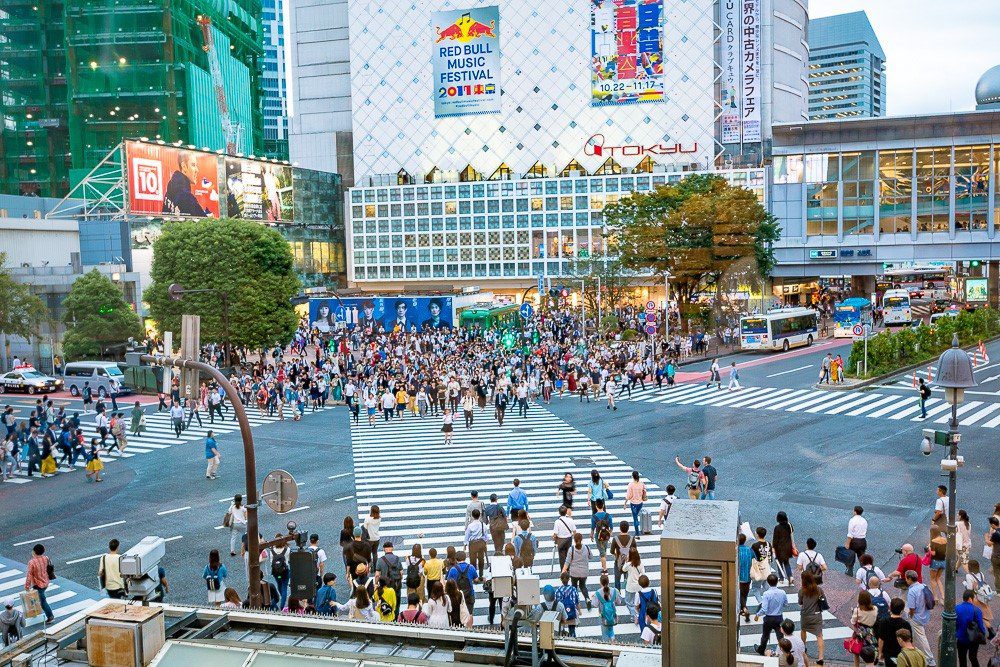
Shibuya High Bar with View of Shibuya Crossing
To get one of the best views of Tokyo at night we’d easily recommend the “Top of Shinagawa”. As its name implies, this fancy bar is located near the metro station of Shinagawa. You will need to enter the Prince Hotel and use one of their elevators to reach it. With stunning view of Tokyo tower to compensate for the steep price of the cocktails (around JPY950 ), it’s worth splashing out a little.
Visitors beware, for the best view of the city, including Tokyo Tower, be sure to seat yourself in the smoking area. The non-smoking section is located on the opposite side of the building and while it’s still a good view, you’d be missing out on the landmark itself lighting up the scenery with its bright orange and red lights. It’s worth enduring a little second-hand smoke.
If you are traveling with children consider opting for the non-smoking room and asking the reception for a quick peek into the smoking area, they will be happy to oblige and show you in.
Marie-Carmen Infantes Hughes from The Orient Excess
An alternative option to view Shibuya Crossing is inside the Keio Inokashira Line Shibuya Station!
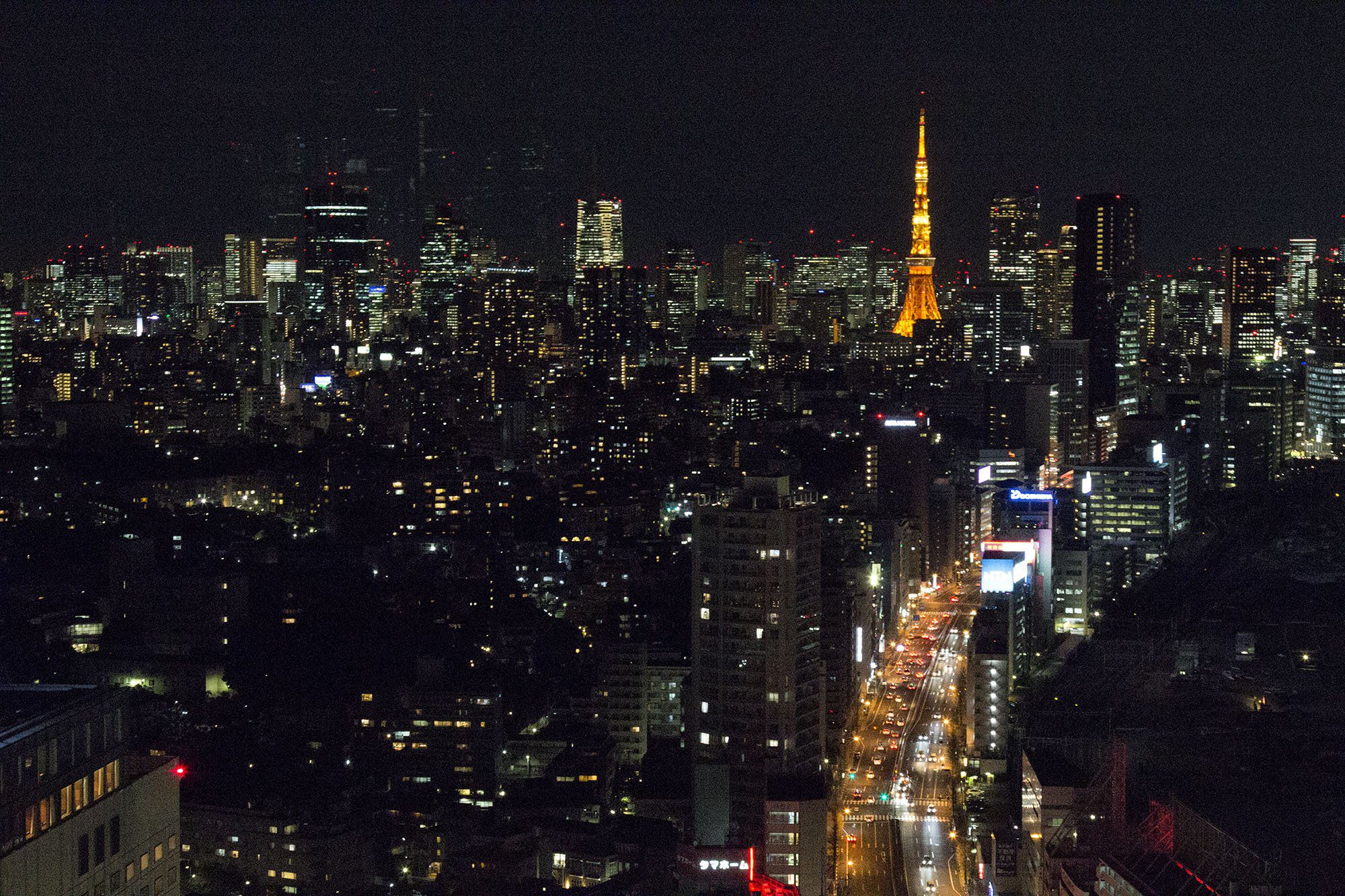
Hachiko Memorial
The Haichiko Memorial commemorates a dog who was so faithful that even after his owner died he continued to visit Shibuya Station every day to wait for his owner. The Haichiko Statue sits where Haichiko used to sit every day to wait. The story became very famous and several movies have been made to tell his story.
There is also a beautiful mosaic art work on the wall of Shibuya Station which tells the story. You may also not realise that after Haichiko died in 1935 that his remains were preserved and are on display at the National Science Museum in Ueno.
Accommodation Options around Shibuya in Japan
Check out the accommodation options around Shibuya in the below accommodation deal finder from Booking.com.
Booking.comWhat to Do in Southern Tokyo – Roppongi and Odaiba
On the map below you can click on each marker to see interactively the location of each of the Southern Tokyo – Roppongi and Odaiba attractions which are detailed below.
Roppongi
The Roppongi Hills centre is a mecca for shoppers in Tokyo, with an amazing number of shops, entertainment and restaurants. The Roppongi nightlife is well known with most nightclubs being open to the early hours of the morning.
Tokyo Tower
Tokyo Tower is one of several popular locations to head up and get a great view over Tokyo, also in the hope of seeing Mt Fuji in the distance from time to time. The inspiration for the Tokyo Tower was the Eiffel tower in Paris and they bear a distinct resemblance, although Tokyo Tower is 13 meters taller and for many years was the tallest structure in Tokyo until the Tokyo Skytree took over that title!
The main observatory is 150 meters high, and is accessed via either an elevator or 600 steps, both require a paid ticket! The second tier ‘special observatory’ is located at the 250 meter high mark.
Note that the special observation deck is currently undergoing renovation. Work on the North side (facing the Imperial Palace and Marunouchi) and the East side (facing Tokyo Bay and Odaiba) has already been completed. Work on the West side (facing Roppongi and Shinjuku) will commence on 3 September 2018. Visitors will be unable to see the view from the West side from the main deck for about five months until around January 2019. After completion of work on the West side, work will commence on the South side (facing Shinagawa and Yokohama).
Click here to check out prices and to book your tickets to visit Tokyo Tower via the Klook website.
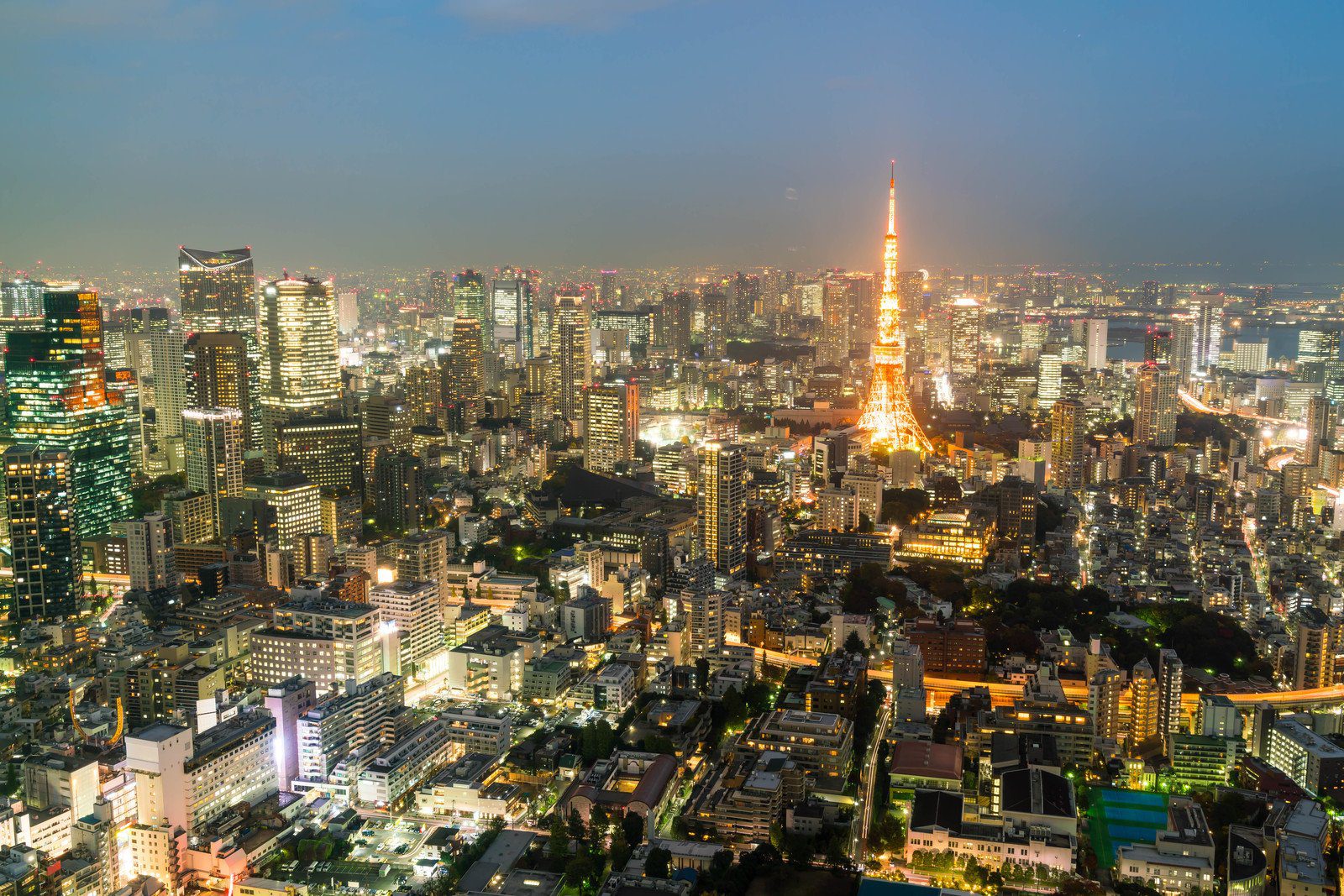
Accommodation Options around Roppongi in Japan
Check out the accommodation options around Roppongi in the below accommodation deal finder from Booking.com.
Booking.comOdaiba
Odaiba is a newly created part of Tokyo which has been built on an artificial island in Tokyo Bay which is connected. Odaiba has many futuristic buildings and attractions, including museums and shopping malls. Many people visit Odaiba just to see the amazing architecture of the buildings! Oh, and did you realise that Odaiba has a replica of the Statue of Liberty, overlooking Tokyo Bay and Rainbow Bridge?
There are many massive shopping malls in Odaiba, including Aquacity, which includes a ramen theme park, Decks Tokyo Beach, which includes a Madame Tussauds Wax Museum, a Legoland Discovery Centre and Tokyo Joypolis and DiverCity Tokyo Plaza, which has the Gundam Base Tokyo and 19.7 metre high Unicorn Gundam statue out the front.
At the Telecom Centre you can go up to a free observation deck to look over Tokyo. Close by is the Museum of Maritime Science, the futuristic National Museum of Emerging Science. If you want to get an onsen experience in Tokyo you can visit Oedo Onsen Monogatari which reproduces and Edo Period vibe. The Onsen also has restaurants, other entertainment and overnight stays available.
Overall you could easily spend several days exploring Odaiba alone!
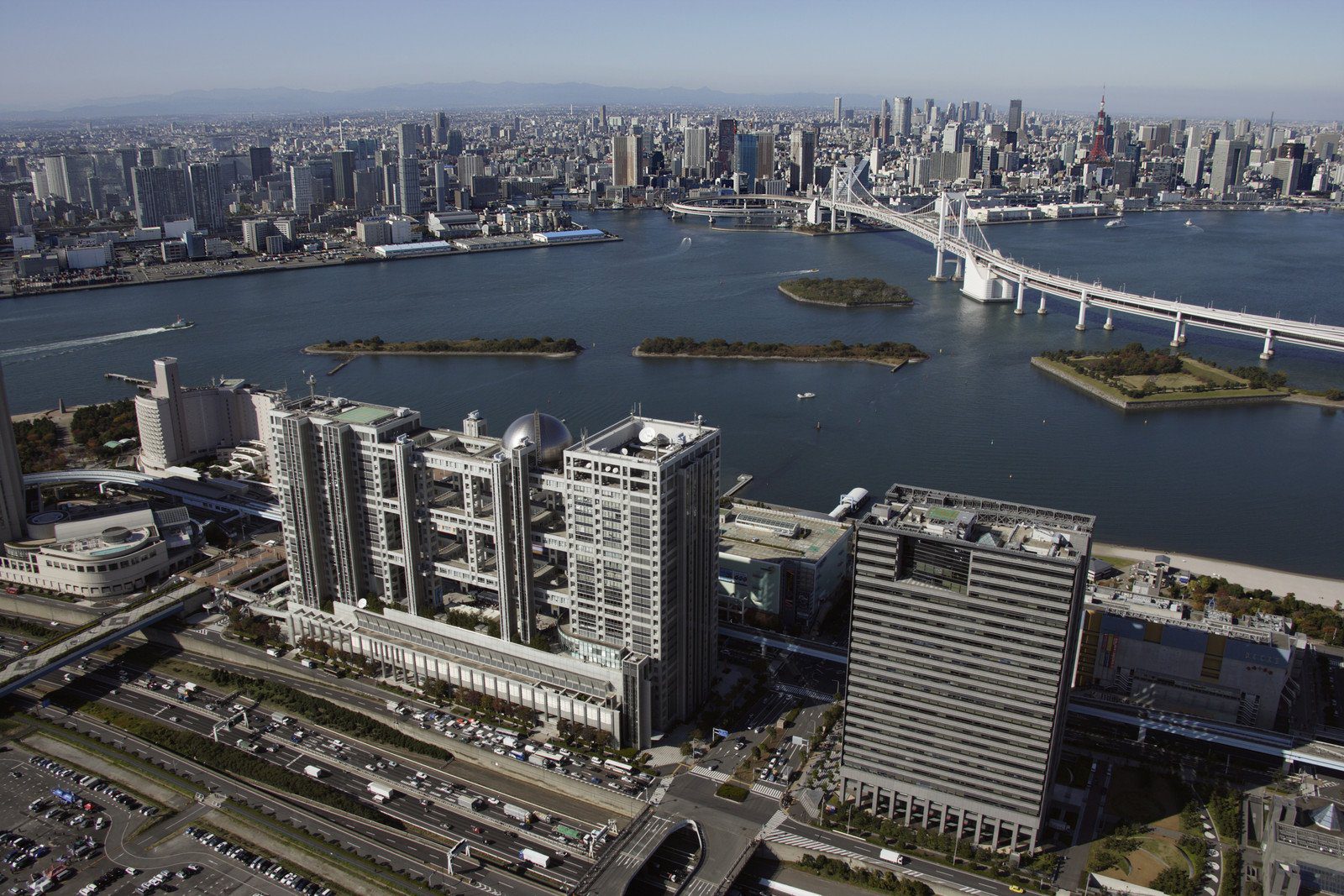
Yakatabune – Odaiba Island by Boat
Yakatabune is an old, Japanese custom. Long ago, in the Edo period, people used to spend summer evenings on the boats in the Tokyo Bay. It was a popular way to cool down a during hot and humid Japanese summer. Boats were not just a regular mean of transport – yakatabune was more like a traditional, Japanese-style cruising restaurant.
Today you can enjoy yakatabune all year round. The boat-restaurants usually depart from the Hinode Pier, and travel slowly under the Rainbow Bridge to the Odaiba Beach, where they stay on the water for around one hour. The night view of Odaiba is particularly beautiful. The best viewing spot is on the rooftop deck where you can have a 360-degree night view that includes the Rainbow Bridge. Boats are also lit up at night with dozens of colorful lanterns. It’s really romantic.
The boat-restaurants serves light meal and alcohol. It’s a good idea for a dinner for two or evening family trip. A two-hour cruise costs around 10 000 yen.
Ibazela Krawczyk from the Love Traveling cultural tourism blog
Click here to check out prices and to book your Tokyo Dinner Cruise on Tokyo Bay through the Klook website.
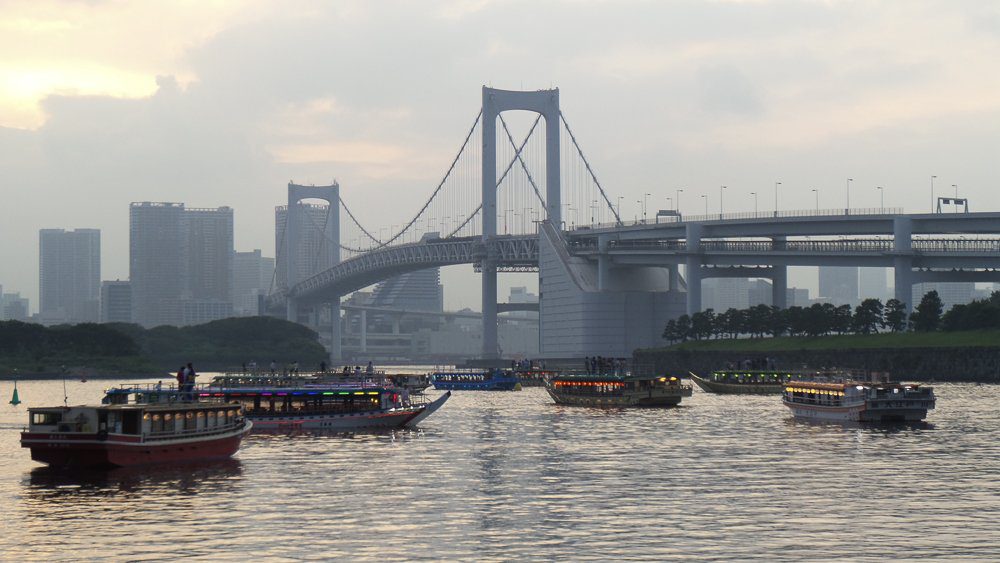
Accommodation Options around Odaiba in Japan
Check out the accommodation options around Odaiba in the below accommodation deal finder from Booking.com.
Booking.comWhat to Do in Outer Tokyo – Disneyland, Disneysea and the Ghibli Museum
On the map below you can click on each marker to see interactively the location of each of the Outer Tokyo tourist attractions which are detailed below.
Things to Do in East Tokyo
Disneyland Theme Park in Tokyo
Tokyo Disneyland was the first Disney park to open outside the USA. The theming and rides in the park are very similar to Disneyland California!
So if you have already visited other Disney parks I would definitely recommend that you visit the unique Disneysea theme park which has been reviewed below. However if you have never been to another Disney park or have younger children then Tokyo Disneyland is definitely worth visiting!
Disneysea Theme Park in Tokyo
DisneySea in Tokyo is the only one of its kind in the world and even the American’s come all the way to see! It is located next to Disneyland Tokyo in Urayusa, Chiba and is easily accessible from Tokyo. We were staying in Shinjuku and it took us about 40mins door to door. DisneySea is totally different to any experience you are likely to have at Disneyland anywhere else.
DisneySea has a nautical exploration theme and is split into 7 themed areas including Mediterranean Harbour, Mysterious Island, Mermaid Lagoon, Arabian Coast, Lost River Delta, Port Discovery and American Waterfront. It still has all the Disney characters and merchandise but its just a little bit different. There are still plenty of thrill rides and I think it is aimed at a slightly older age group. I think if you have really little ones that Tokyo Disneyland is still a better option. I was a little overwhelmed when I visited as it was nothing like what I was expecting, if you are looking for something Disney and original, this is the park for you.
Sally Lucas from Our 3 Kids v The World
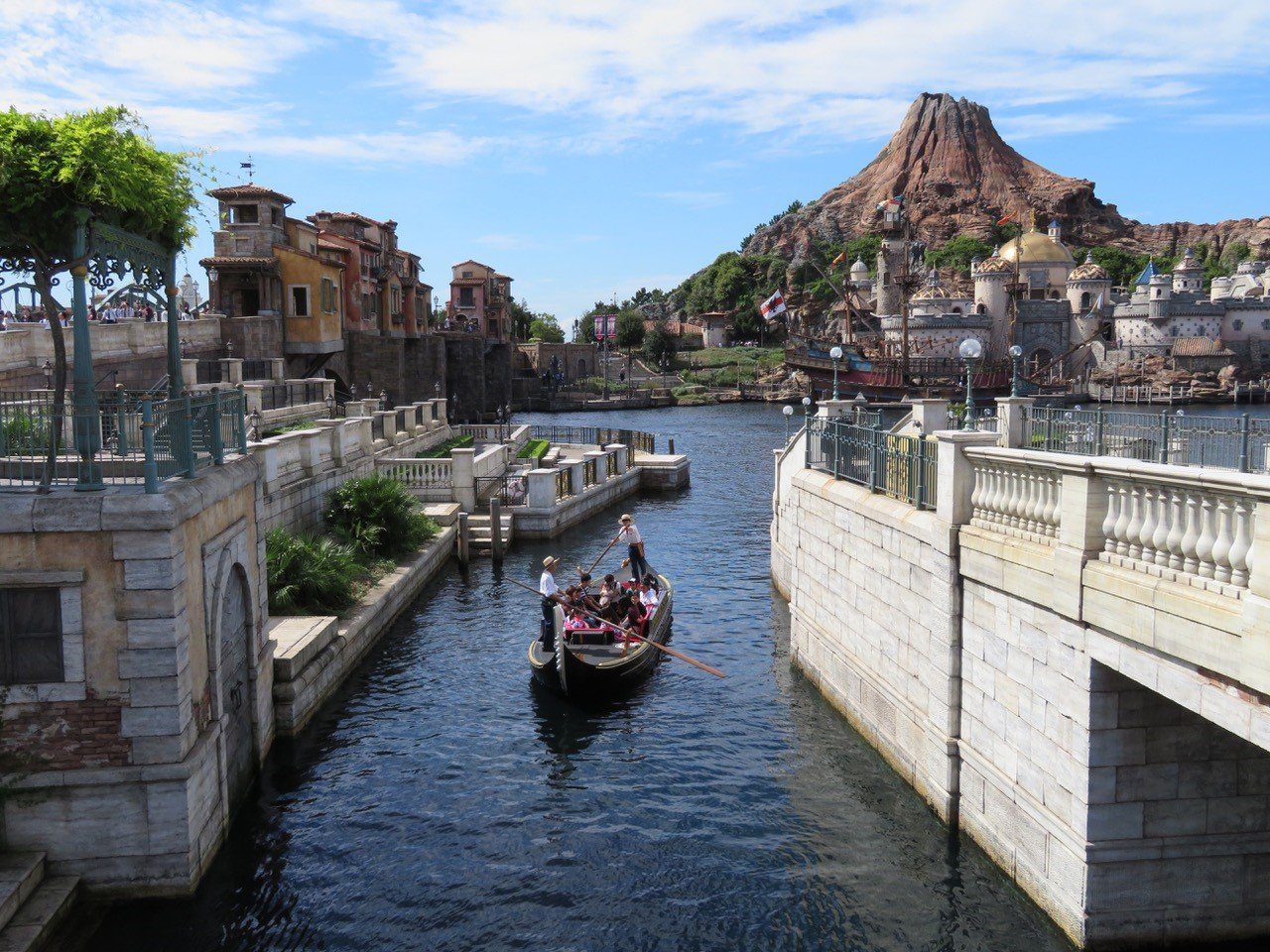
Accommodation Options around Disneysea and Disneyland in Japan
Check out the accommodation options around Disneysea and Disneyland in the below accommodation deal finder from Booking.com.
Booking.comThings to do in West Tokyo
Ghibli Museum
We nearly didn’t make it. It was just too hard getting a ticket. But after hours of suffering, we had our tickets and our trip to Ghibli Museum scheduled.
It’s such an incredible Museum, probably just the best one ever! If you’ve watched any of the Ghibli movies (My Neighbor Totoro, Kiki’s Delivery Service, Ponyo on the Cliff, and a bunch others), you’ll want to visit it.
It’s just incredibly beautiful and the attention to detail is impeccable. You can see it by the tickets (made of film strips), the toilets, and even the cafe. Everything is on the theme.
We’re not allowed to take photos inside of the museum, so everyone goes wild when gets to the garden with the Laputa giant robot.
We loved it and I’d go with or without kids! There’s enough to keep everyone happy there, and we all can’t wait to get back there, even with all the hassle that buying the tickets was!
Thais Saito from World Trip Diaries
Click here to check out our dedicated article to find the best option to book your Ghibli Museum tickets.
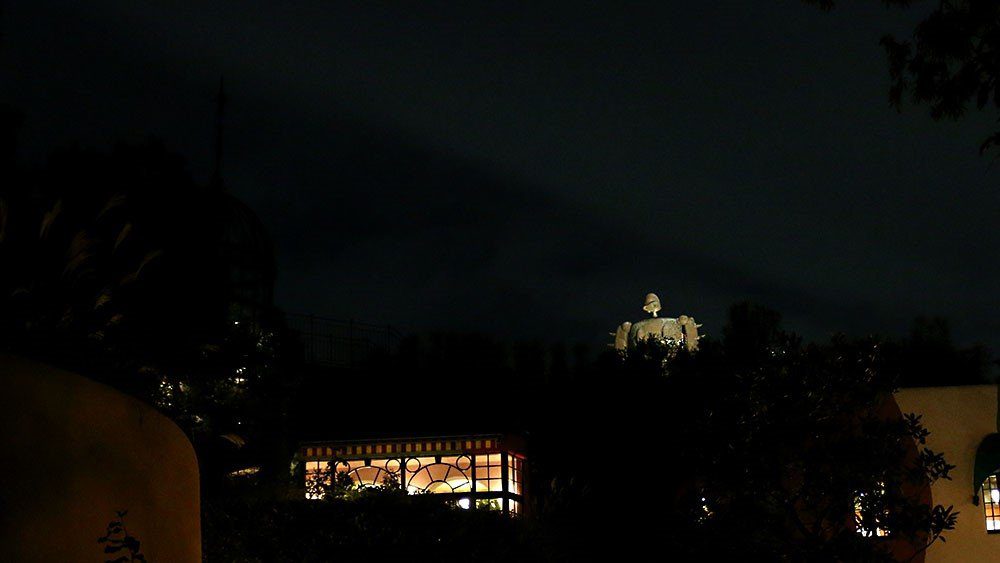
Getting Around Tokyo
Tokyo Train System
For most people the best option to get around Tokyo is by train. Check out our detailed article on The Ultimate Guide to Tokyo Transport for Tourists. A very useful item to plan to purchase after arrival is a local ‘tap on tap off’ public transport card for Japan. These cards work for intra city travel on most trains, trams, buses and ferries. You can easily top up the funds on your card at every Japan train station. Most machines have an English language option and you can only use cash to top up your card. As you go through the tap on and off machines they display your remaining funds.
The major options are a Suica Card, Pasmo Card and an ICOCA Card. Suica is the main card used in Tokyo and Icoca is the main card used in Kyoto/Osaka. You will pleased to know that you can purchase any one of these cards, as all three cards can be used in a large range of towns across Japan.
If you have purchased a Japan Rail pass and it is activated you can also use your JR Pass to get around Tokyo on the JR lines only. Click here to see my article on How to Purchase a Japan Rail Pass. Note that you get best value out of a JR Pass when you use it for inter city transport rather than for local public transport, so try to avoid buying a JR Pass if you are not moving around regularly 🙂 .
For more information on what apps to use on your phone to get around on the Tokyo train system click on this link to see our article on the Top 16 Phone Apps for Your Japan Trip – which includes links for Japan train apps!
If this article has left you feeling overwhelmed by the amount of choices, you may like to check out this 7 day and 5 day itinerary of Tokyo article to help work out how to best sequence your visit.
Vespa Rental in Tokyo
I have only been to Tokyo for 5 days but one of my favorite activities was to blend right in with the rushed lifestyle on a Vespa. I rented a Vespa and literally drove around for 8 hours. Obviously, I went to see the parks and the temples and the other tourist attractions in Tokyo, but being on a Vespa in this overwhelming city felt like driving around in a movie. Traffic is very regulated and it is easy to go around.
While getting lost I ended up in places where most tourist would never get to. Getting lost is not necessarily a bad thing to do. I mounted a GoPro right in front of my Vespa and got some amazing footage, with being on world’s busiest crossing on a Vespa being one of the highlights.
The big advantage of a Vespa is you can park it everywhere for free, you save transportation and taxi costs plus it is very cheap compared to other things in Tokyo. I paid only about $35-$40 for 1 day.
Tom from traveltomtom
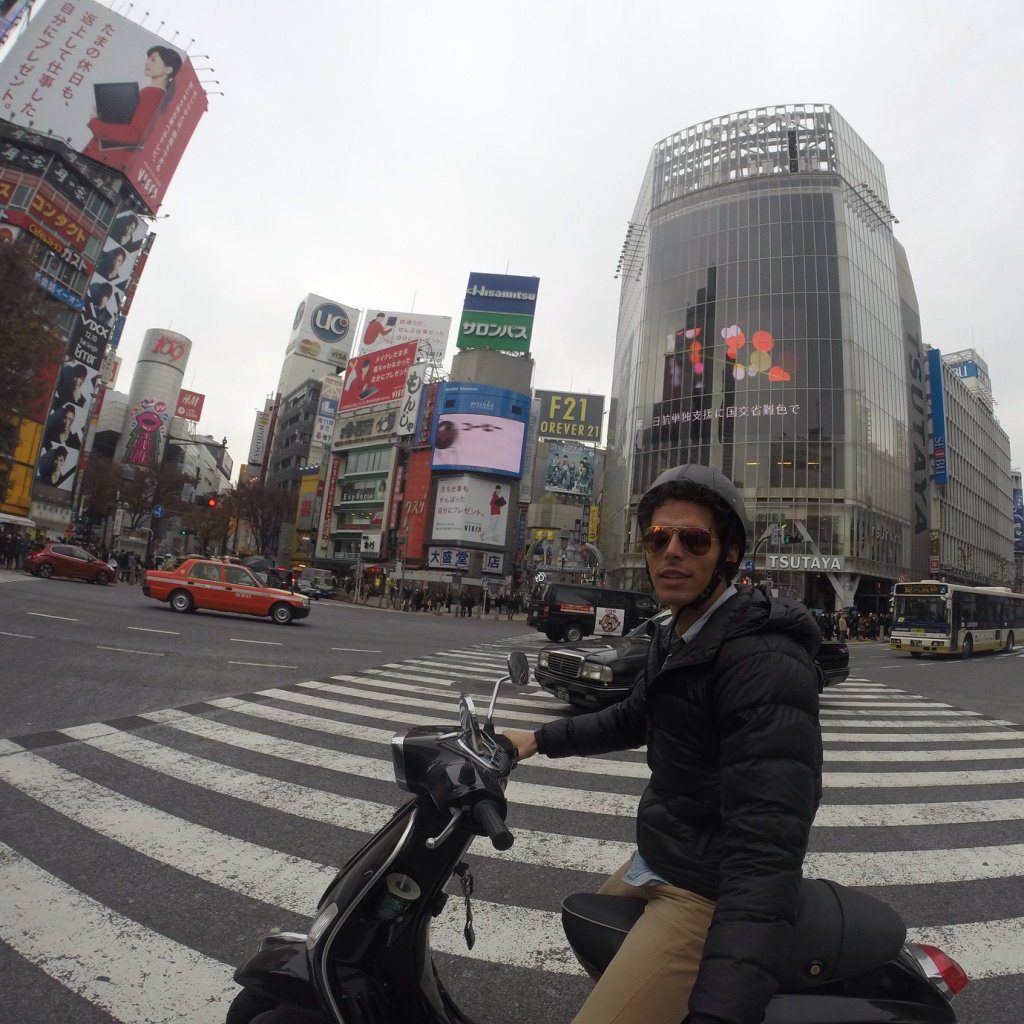
You may also like to read:
- Unusual Places to Visit in Tokyo
- Best Online Pocket Wifi in Japan for Tourists
- How to Visit Jigokudani Snow Monkey Park from Tokyo and Nagano
- Tokyo With Kids: 10 Cheap Things to Do
Join the Japan Travel Planning Facebook Group

Disclaimer: This article contains affiliate links. If you book after clicking on one of these links then we may receive a small commission at no extra cost to you.
Anne Sutherland-Smith is the creative force behind Pretraveller.com, a travel blog that specializes in offering insightful guidance for exploring Japan, South Korea, Australia, Hong Kong, and Singapore. Her passion for these diverse and dynamic regions shines through in her expert advice, particularly in helping travellers stay connected with the latest in SIM cards, pocket WiFi, and eSIMs.
With an unquenchable thirst for Asian and Oceanian cultures, Anne has carved out a niche as a knowledgeable guide for those venturing into the bustling streets of Tokyo, the historical alleys of Kyoto, the vibrant scenes of Seoul, the scenic landscapes of Australia, the vibrant markets of Hong Kong, or the futuristic cityscape of Singapore. Her articles are full of practical tips and detailed information, ensuring travellers are well-equipped for their journeys.
Anne’s approach is grounded in providing reliable, authoritative travel content that enhances the travel experience. From navigating the complexities of digital connectivity on the go to immersing in the local culture, her advice is designed to make travel both enjoyable and seamless.

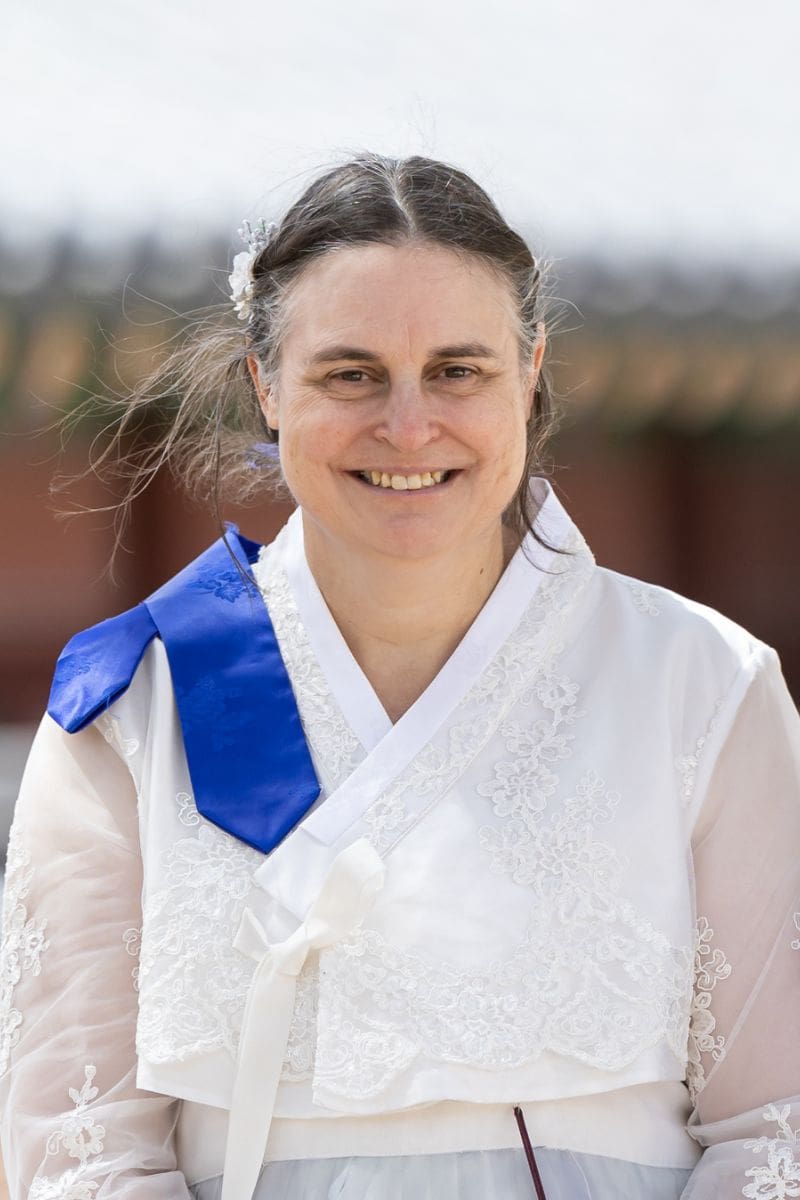
Whoa! That’s a comprehensive list of recommended places. We will use this as reference because we are planning to visit Tokyo sometime early next year. 🙂
Thanks, I appreciate the feedback! And I hope you get good information to help you plan your trip.
This is just wonderful and so helpful.
Thank you so much
Trish, no problem, I am happy that I was able to help you while you were on the go in Japan!
Thanks. We are visiting Tokyo in mid December this year. Any tips for places to see in winter would be appreciated.